Home About Middlesbrough Improving Middlesbrough Old Town Hall Old Town Hall history
Old Town Hall history
1829
In 1801, Middlesbrough was a farming community with a limited population of 25. During the early 1800s Middlesbrough experienced extensive growth in the population following the rapid success of the iron and steelwork industries.
After Joseph Pease visited the area in 1828 he formed a group of six businessmen to create the Owners of Middlesbrough Estate. The Owners purchased the former farmstead for £30,000 to develop the town of Middlesbrough.
The Owners devised a plan for a new town that would support the iron and steel industries.
Designed by the surveyor Richard Otley, the plan of the town was based on a grid-iron street pattern surrounding a central market square, based on the layout of a Roman Fort.
Plots were sold to residents from all over the UK, Ireland, Scotland, Wales and Europe.
Source: Ironopolis, Michael Johnson, 2020
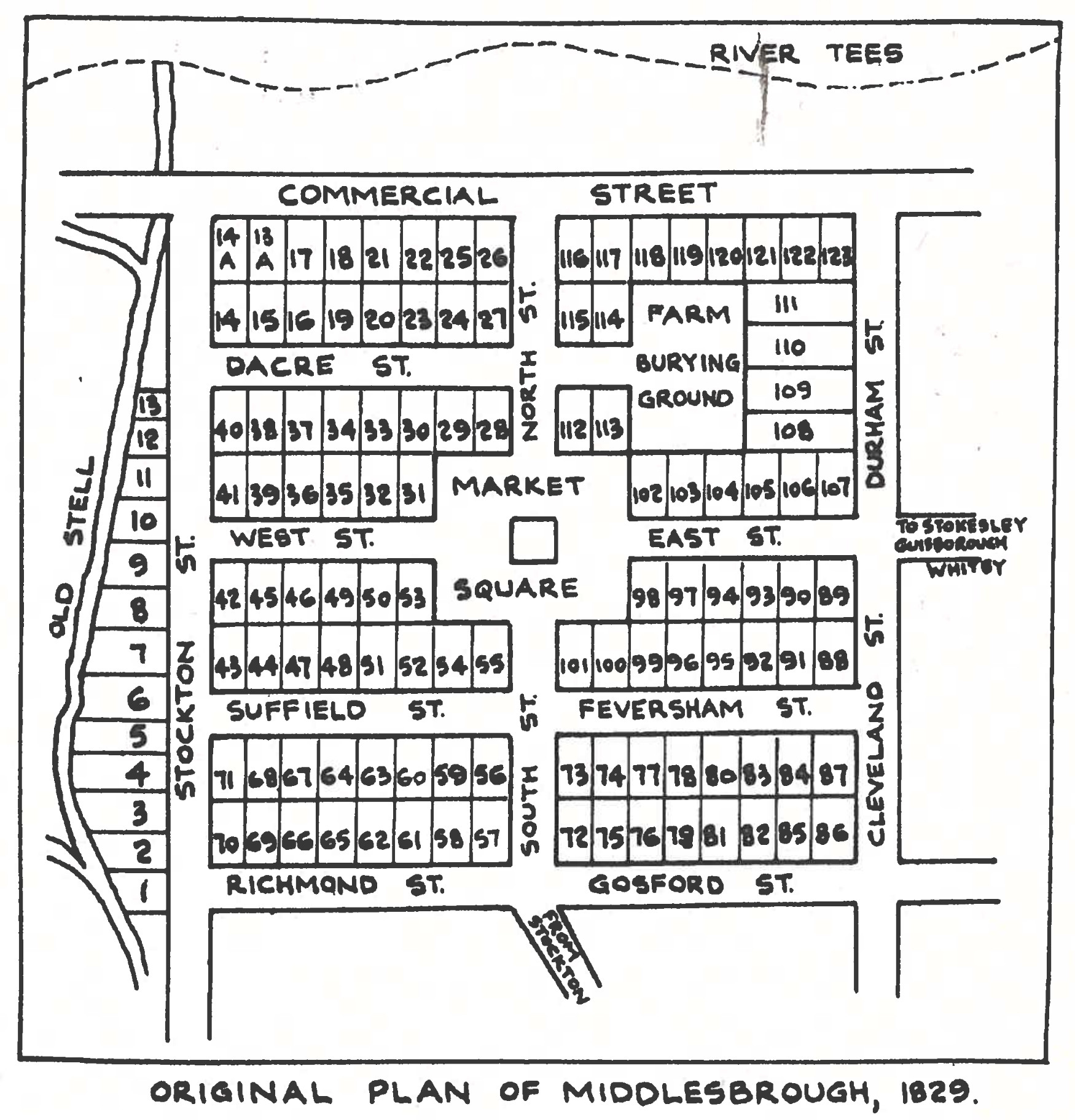
Original Plan of Middlesbrough dated 1829.
Source: Central Middlesbrough Through Time, Tosh Warwick, 2013
1843
As a result of Middlesbrough's growth, it was recognised that a Town Hall was required to give a sense of pride and economic status.
'Town Halls were built in response to changing social, political and economic needs, and from the mid-eighteenth century the catalyst in many places was large-scale urban redevelopment, especially in towns experiencing new prosperity and wealth as a result of industrialisation.'
A competition, was held to design a new Town Hall that would sit at the heart of the town and become a beacon for prosperity and growth.
Source: Town Halls, Karen Averby, 2022.
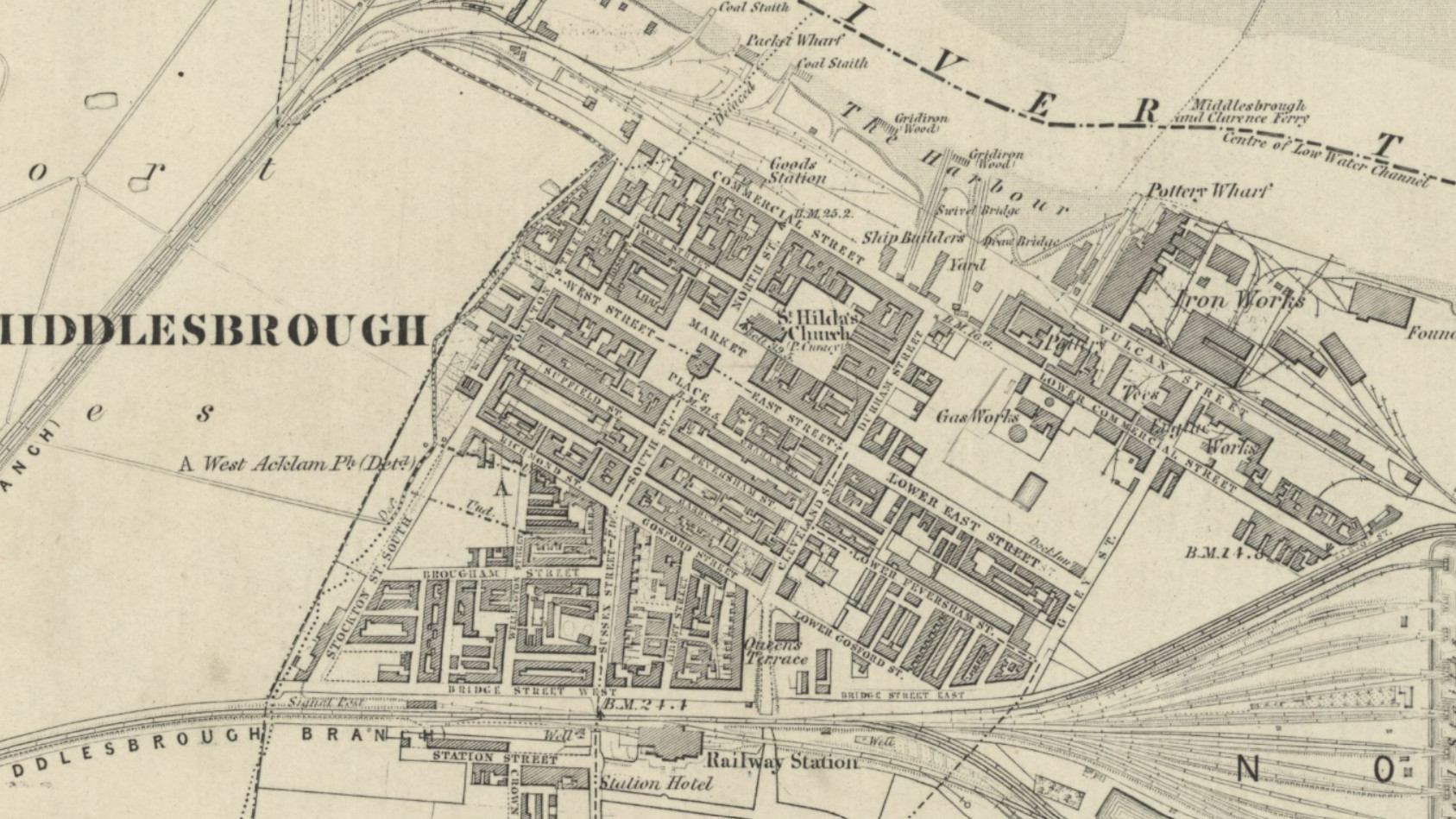 Historic map dating from 1857 showing the development of the town of Middlesbrough.
Historic map dating from 1857 showing the development of the town of Middlesbrough.
Source: National Library of Scotland
1845
William Lambie Moffatt won the competition to design Middlesbrough's first Town Hall.
William Lambie was based in Doncaster from 1838 and had experienced previous success in design competitions for noted civic buildings including Wakefield Corn Exchange completed in 1836. He was skilled in a variety of design styles including Greek, Italianate, Gothic and neo-Jacobean styles and was strongly influenced by William Burn's houses.
Moffatt's design for Middlesbrough Town Hall was in an Italianate style using a combination of white brick with sandstone dressings. Tall arched windows with carved stone detailing and keystones created emphasis to the first floor town hall chamber. The original design featured decorative juliet balconies to the Town Hall windows.
Source: Doncaster Town Trail

The design of Middlesbrough's Town Hall by William Lambie Moffatt in 1845
Source: Dorman Museum local archives
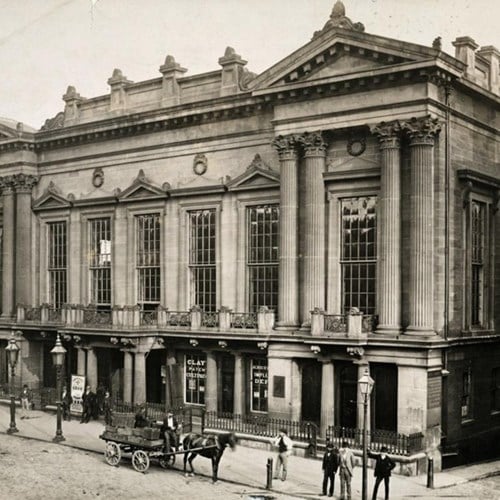
Wakefield Corn Exchange design by William Lambie Moffatt completed in 1836
Source: Doncaster Town Trail
1846
The Town Hall was opened in 1846.
Originally, the ground floor level had shop units fronting the east and west side of the Market Place with a central arched double door onto the north side of the Market Place leading through into the Market Hall.
The Town Hall was on the first floor level accessed from the stair on the north-east corner. The Town Hall comprised of the main Town Hall Chamber along with an ante-room directly adjacent to the stair.
The stair also provided access to the second floor public gallery that overlook the Town Hall Chamber.
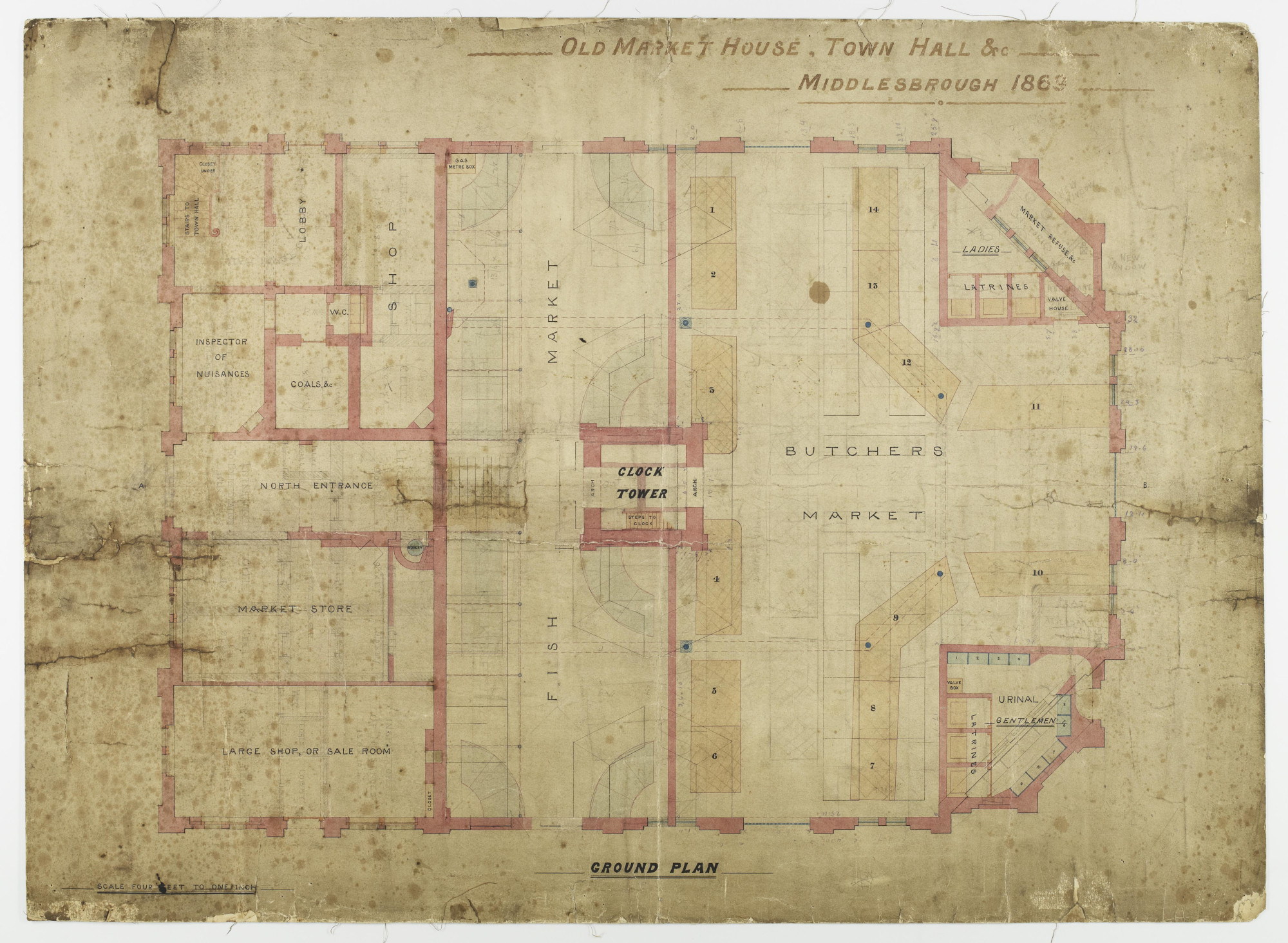
Proposed ground floor plan for the Town Hall and Market Place dating from 1869
Source: Dorman Museum local archives
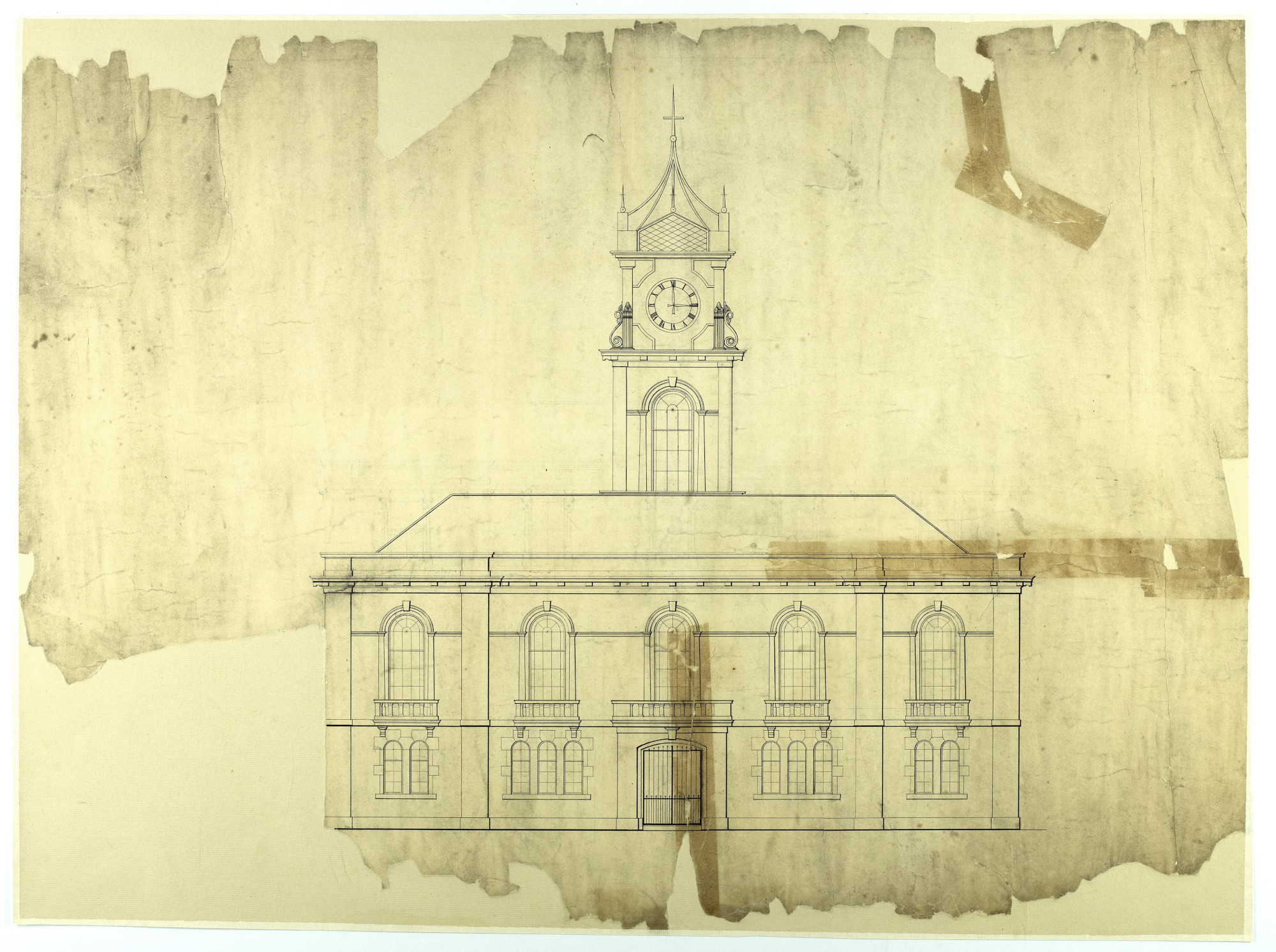
Proposed north elevation
Source: Dorman Museum local archives
1877
Within 40 years of the completion of Middlesbrough's Town Hall, the town continued to witness rapid growth in the population that led the town to expand towards the south side of the Railway Station.
Civic leaders decided that the Old Town Hall was too modest and not grand enough to represent the continued success of the town. It was decided that a new town hall was needed to reflect the significant economic wealth and a site was selected to the south of the new train station completed in 1877.
A competition was launched for the design of the new Town Hall on Albert Road. At this time Middlesbrough was starting to expand towards the south and was no longer constrained by the River Tees to the north and the railway line to the south. The new Town Hall would be one of the earliest buildings constructed south of the railway.
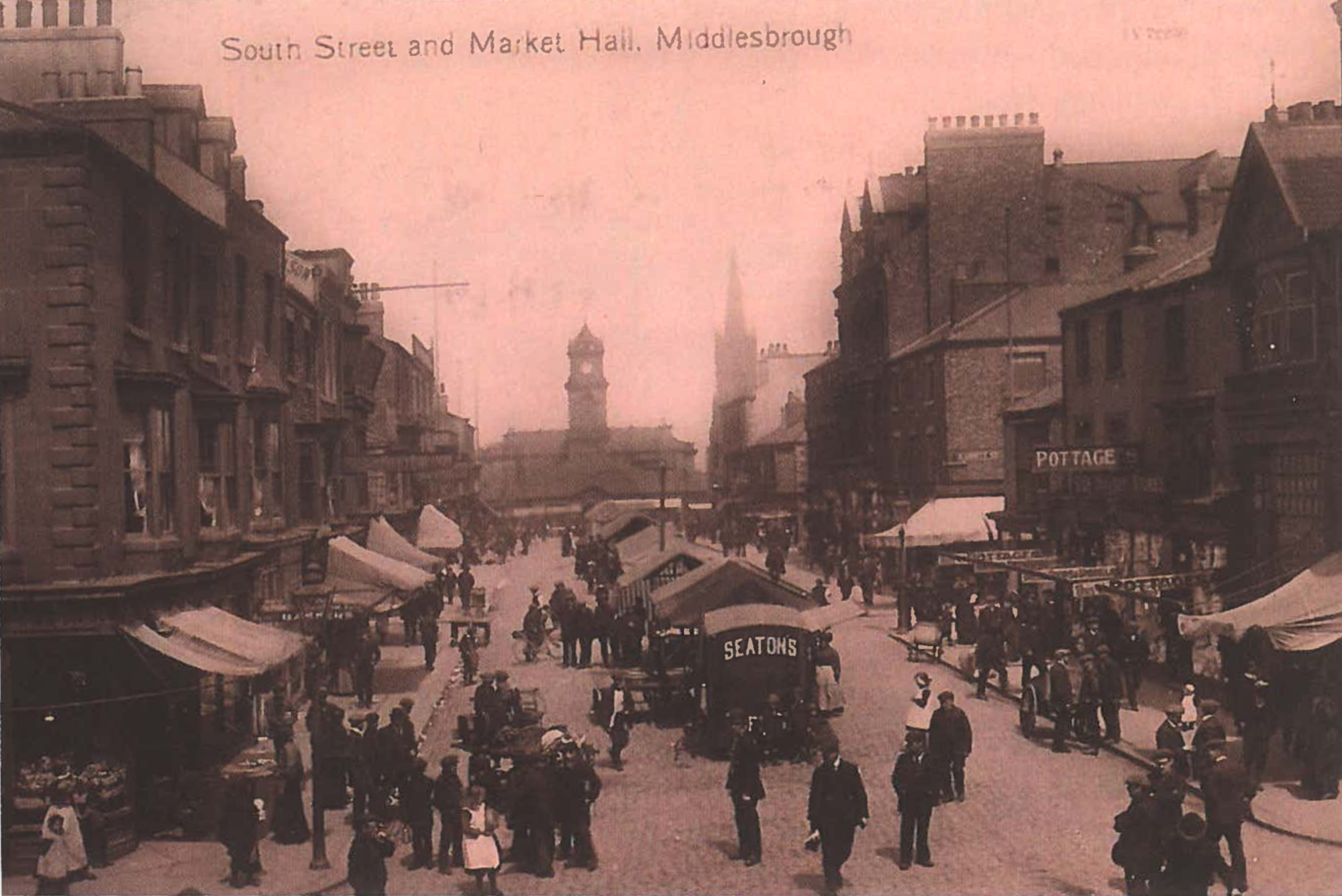
View from South Street to the Town Hall
Source: St Hilda's, Araf Chohan, 2015
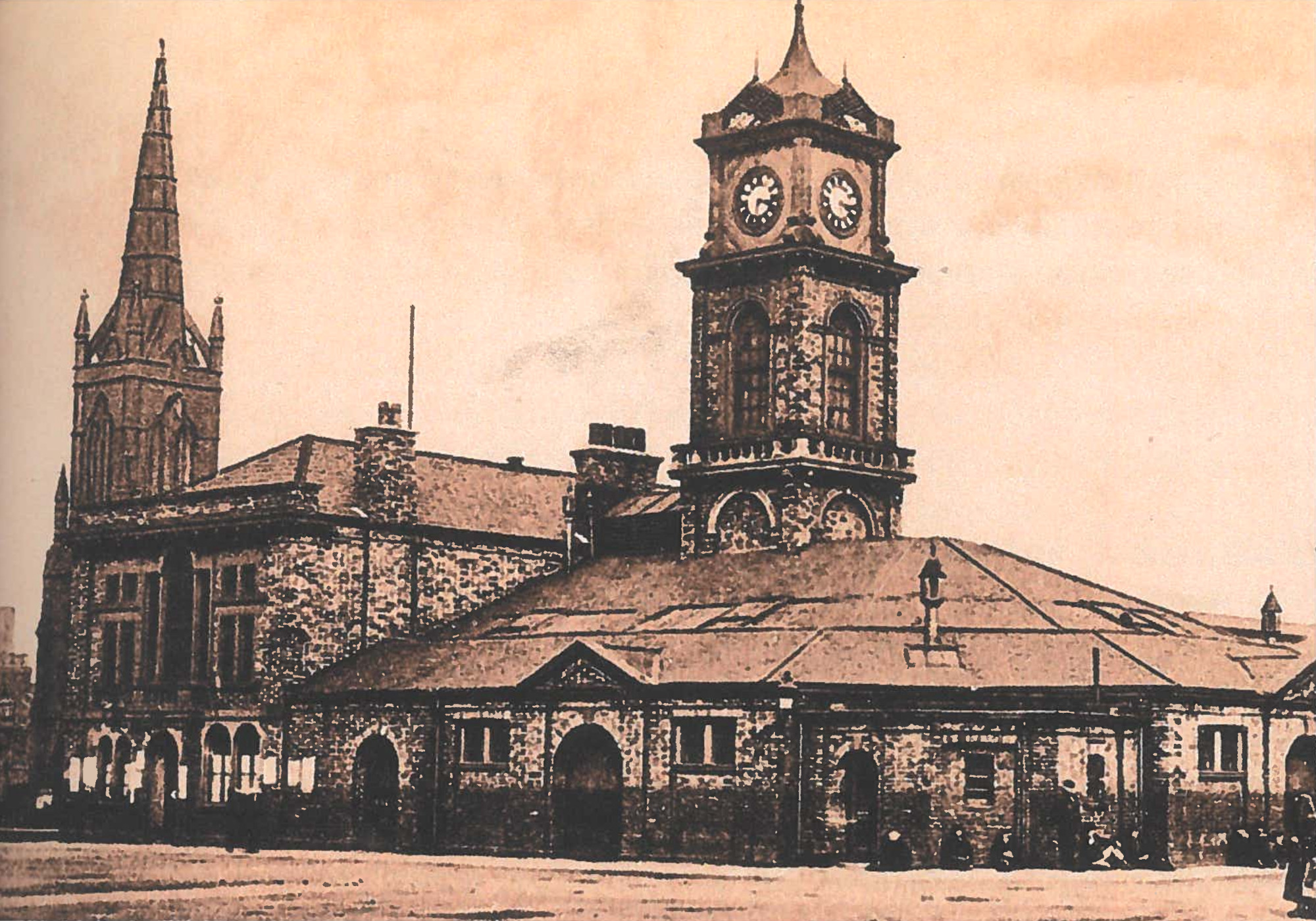
View from Market Place
Source: Ironopolis, Michael Johnson, 2020
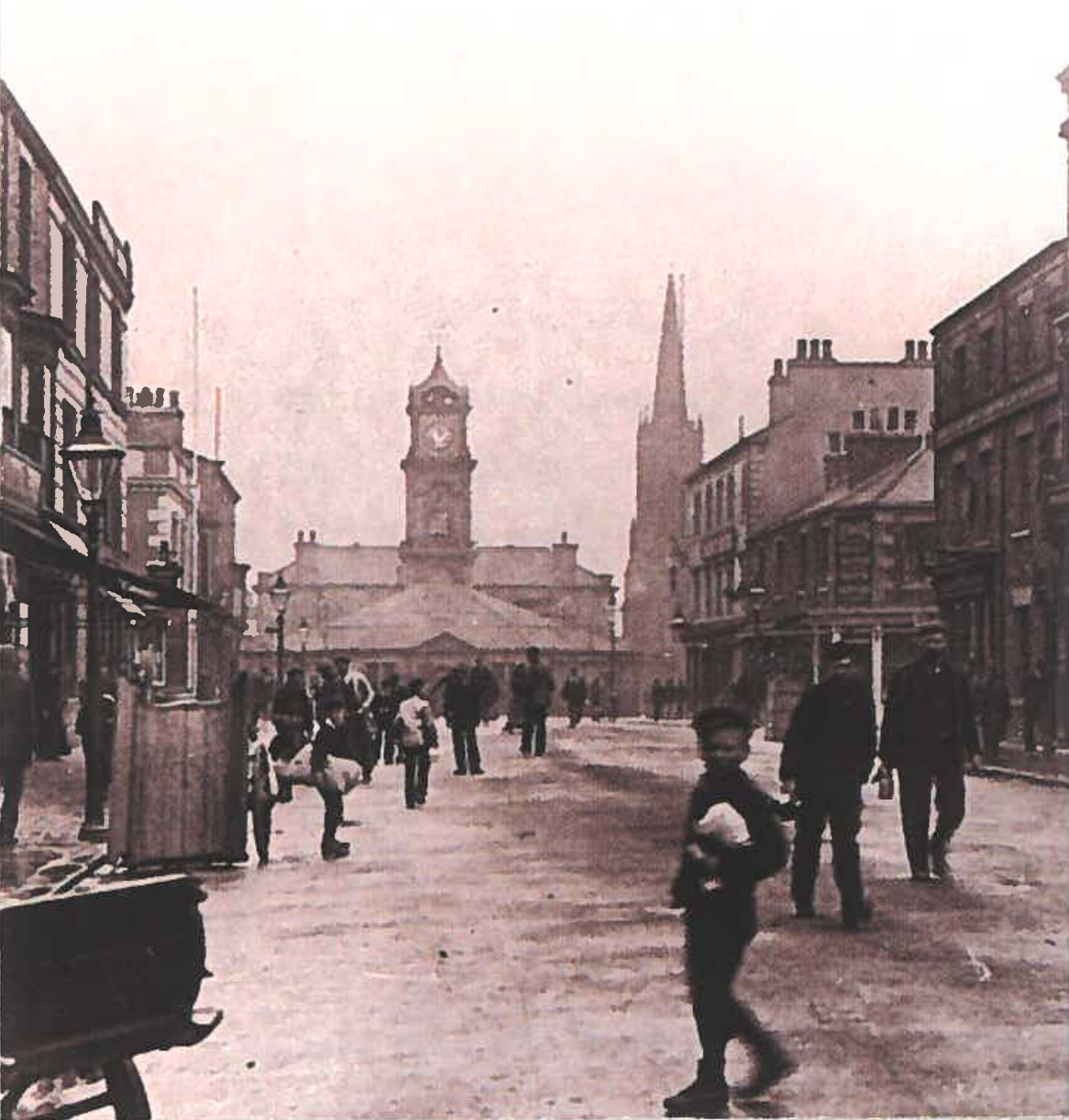
View from South Street to the Town Hall
Source: St Hilda's, Araf Chohan, 2015
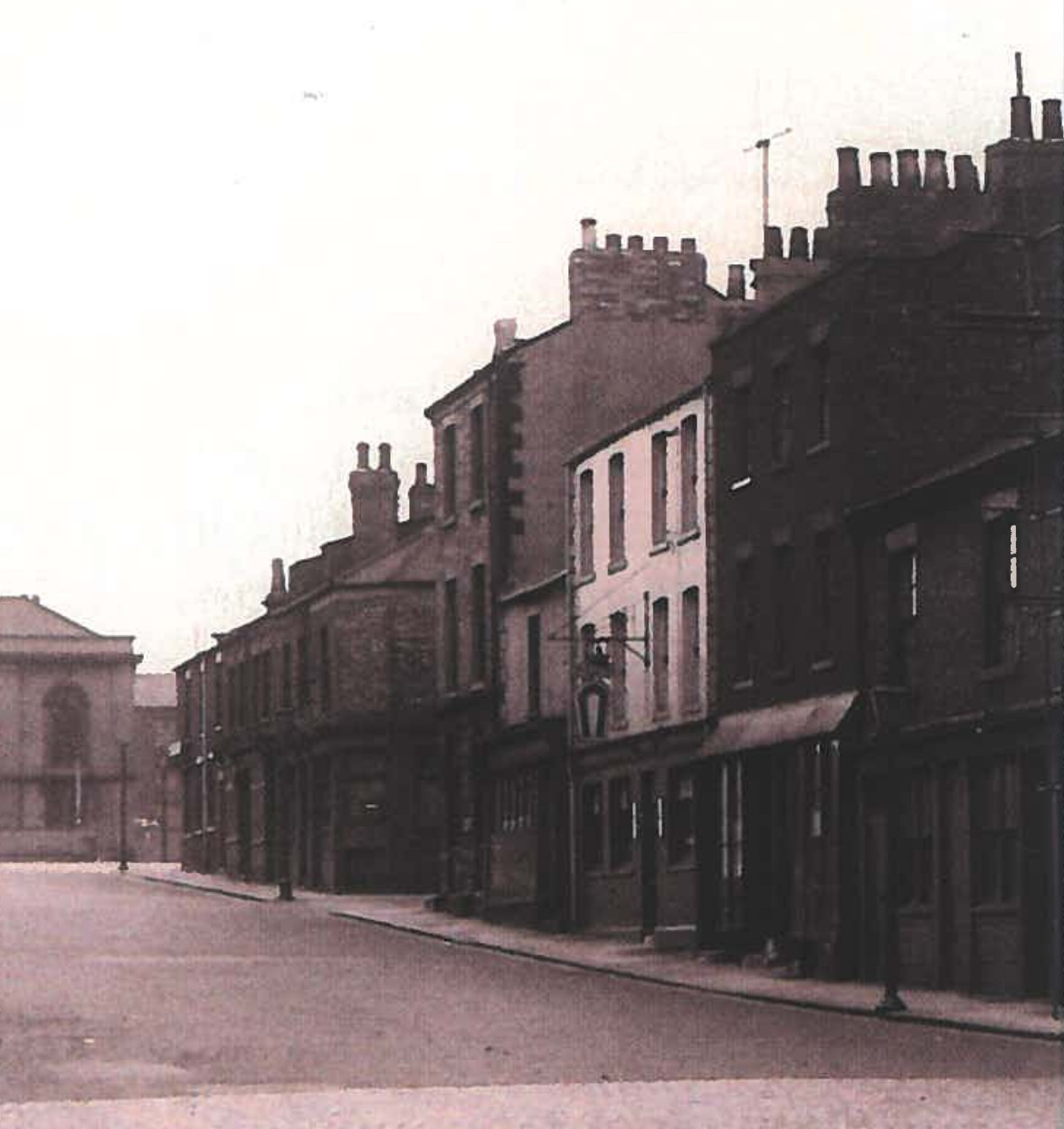
View from North Street
Source: Ironopolis, Michael Johnson, 2020
1882
Following an architectural competition to design the new Town Hall, the architect G.G. Hoskins design was selected.
G.G. Hoskins was responsible for the design of several civic buildings in the North East including banks, town halls, hotels, hospitals, libraries, and schools.
He had also previously designed the Middlesbrough Branch of Backhouse Bank in 1875. Middlesbrough Town Hall is considered his most noted work.
Work started on the construction of the new Town Hall in 1882.
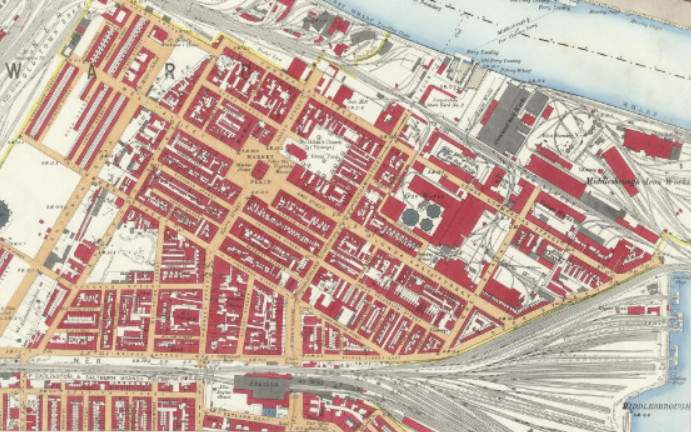
Historic map dating from 1895 showing the development of the town of Middlesbrough
Source: National Library of Scotland
1889
The new Town Hall on Albert Road was opened by the Prince and Princess of Wales on 23 January 1889.
The relocation of the Town Hall to Albert Road and the wider growth of the town towards the south can be seen in the map adjacent. As the prosperity of the town grew, people started to move out of the old town from 'Over the Border' to live and work in the evolving new town.

Historic map dating from 1895 showing the development of the town of Middlesbrough
Source: National Library of Scotland
The location of the new Town Hall has been added at the very bottom of the map, at the intersection of Corporation Road and Albert Road.
1912
Following the relocation of the Town Hall to Albert Road, the Market Place continued to host the weekly Saturday market.
The old Town Hall during this time was in use as a public library with the police station occupying the ground floor level.
The Market Place continued to be the centre for activity and the adjacent photo taken on the day of King George V's coronation in 1911 shows that the area was still a bustling centre for activity in the old town.
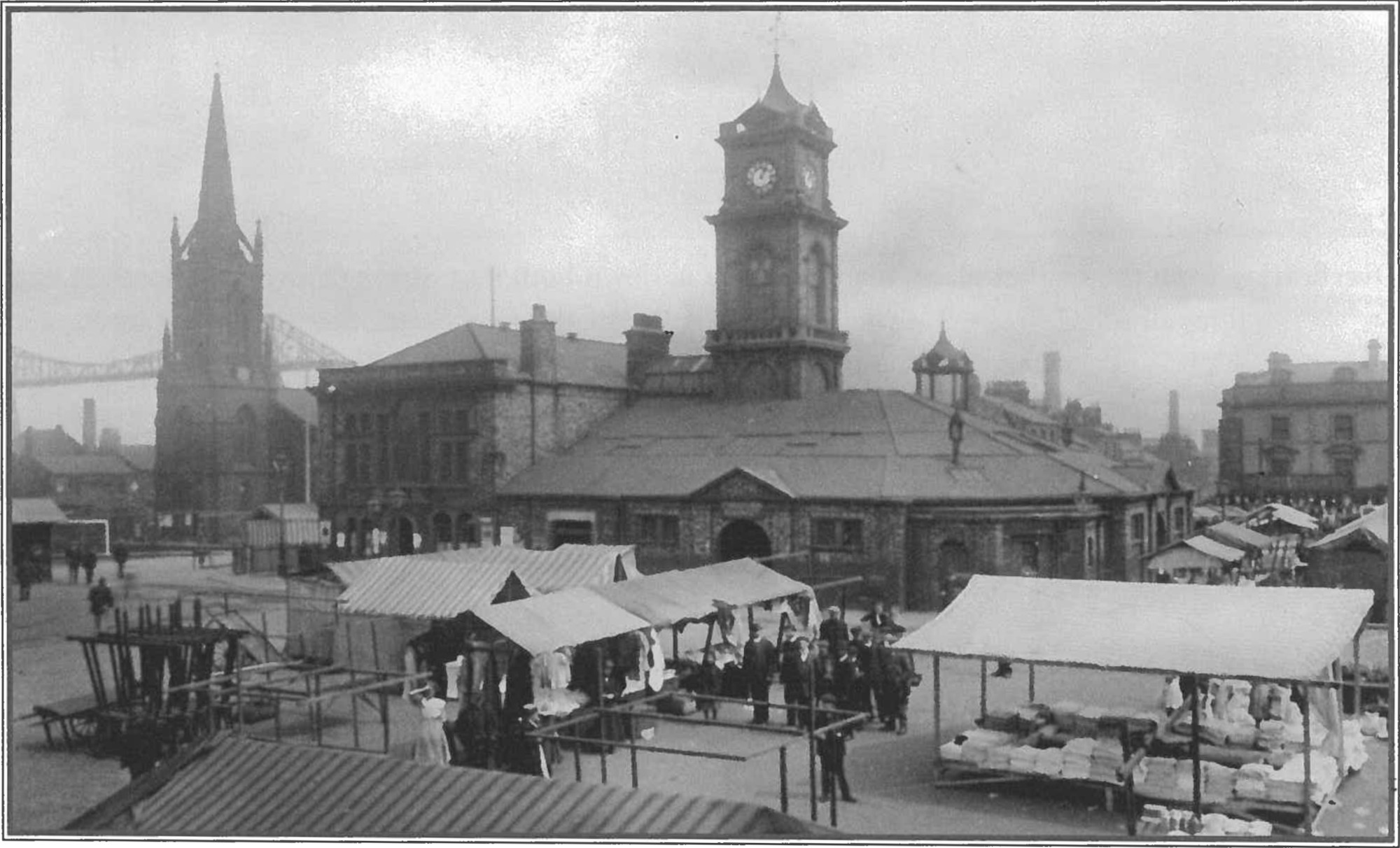
View across the Market Place on market day following the completion of the Transporter Bridge in 1912
Source: Middlesbrough, Araf Chohan, 2013
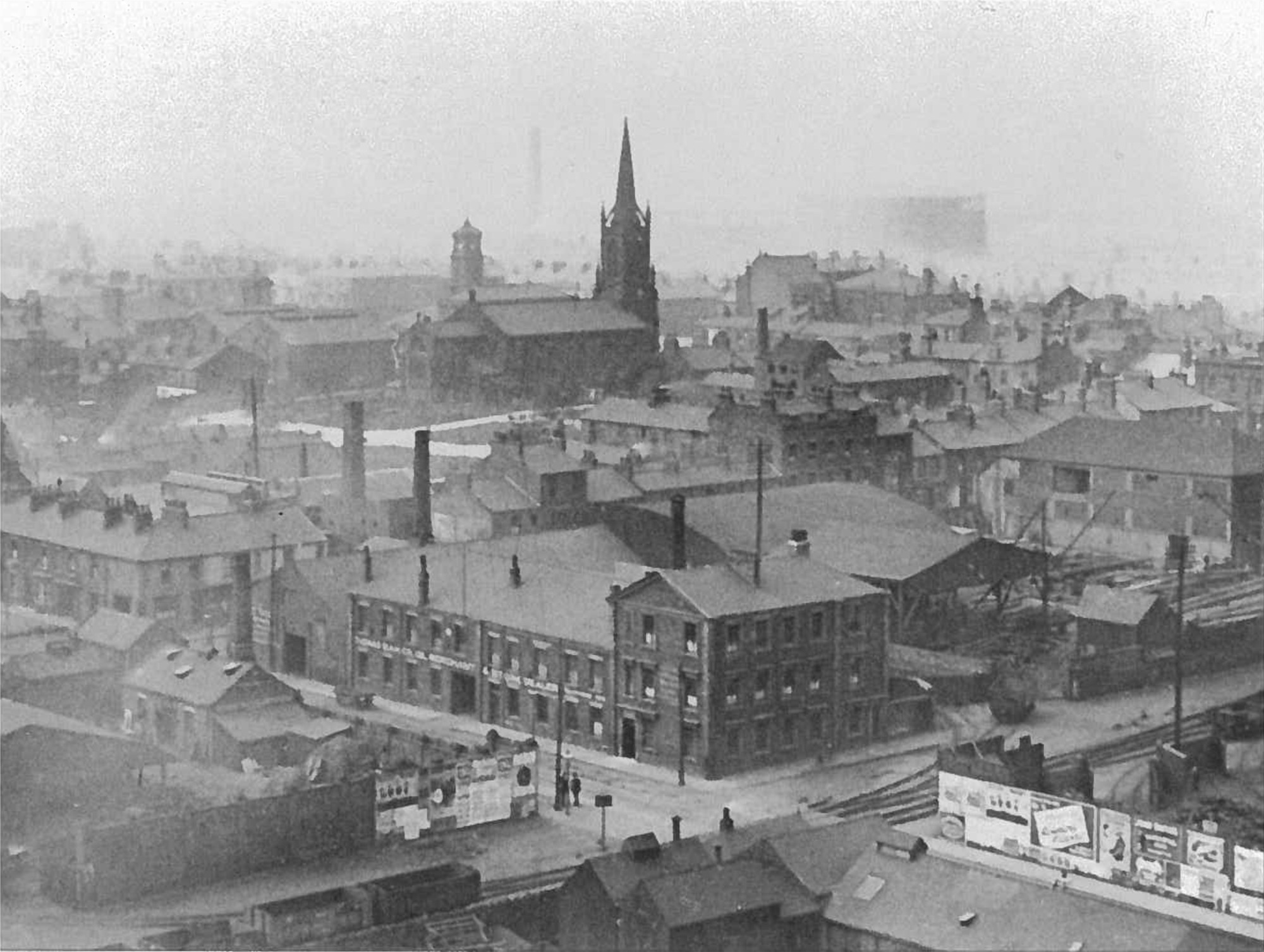
View over St. Hilda's from the Transporter Bridge
Source: Middlesbrough, Araf Chohan, 2013
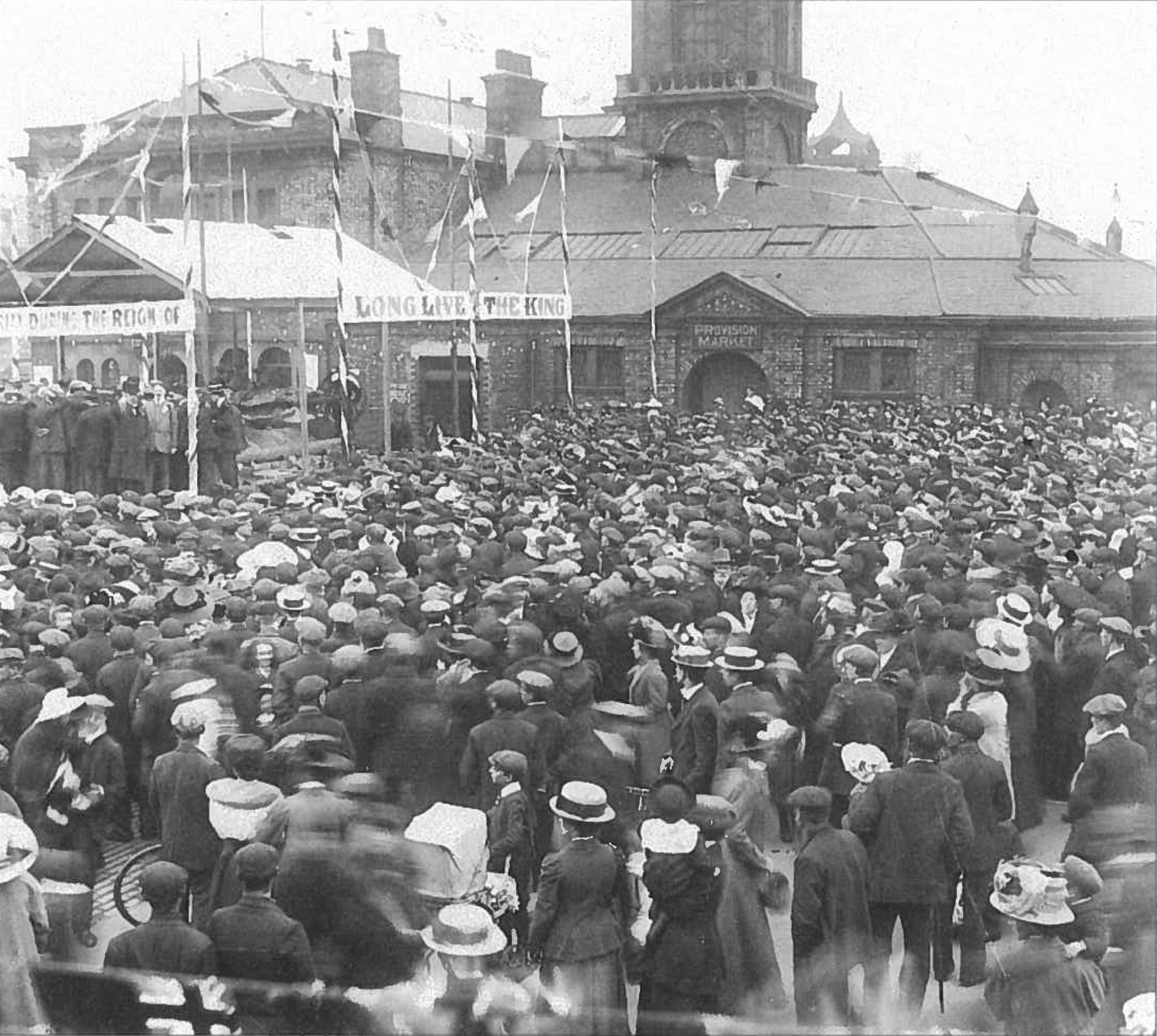
The Old Town Hall on the coronation of King George V in 1911
Source: Middlesbrough, Araf Chohan, 2013
1930s
The Market Hall was demolished and redeveloped in the footprint of the original market to suit the changing needs of the Market Hall. By this time the building was approaching 100 years old.
This redesign created a much simpler roof form and architectural style to the Old Town Hall.
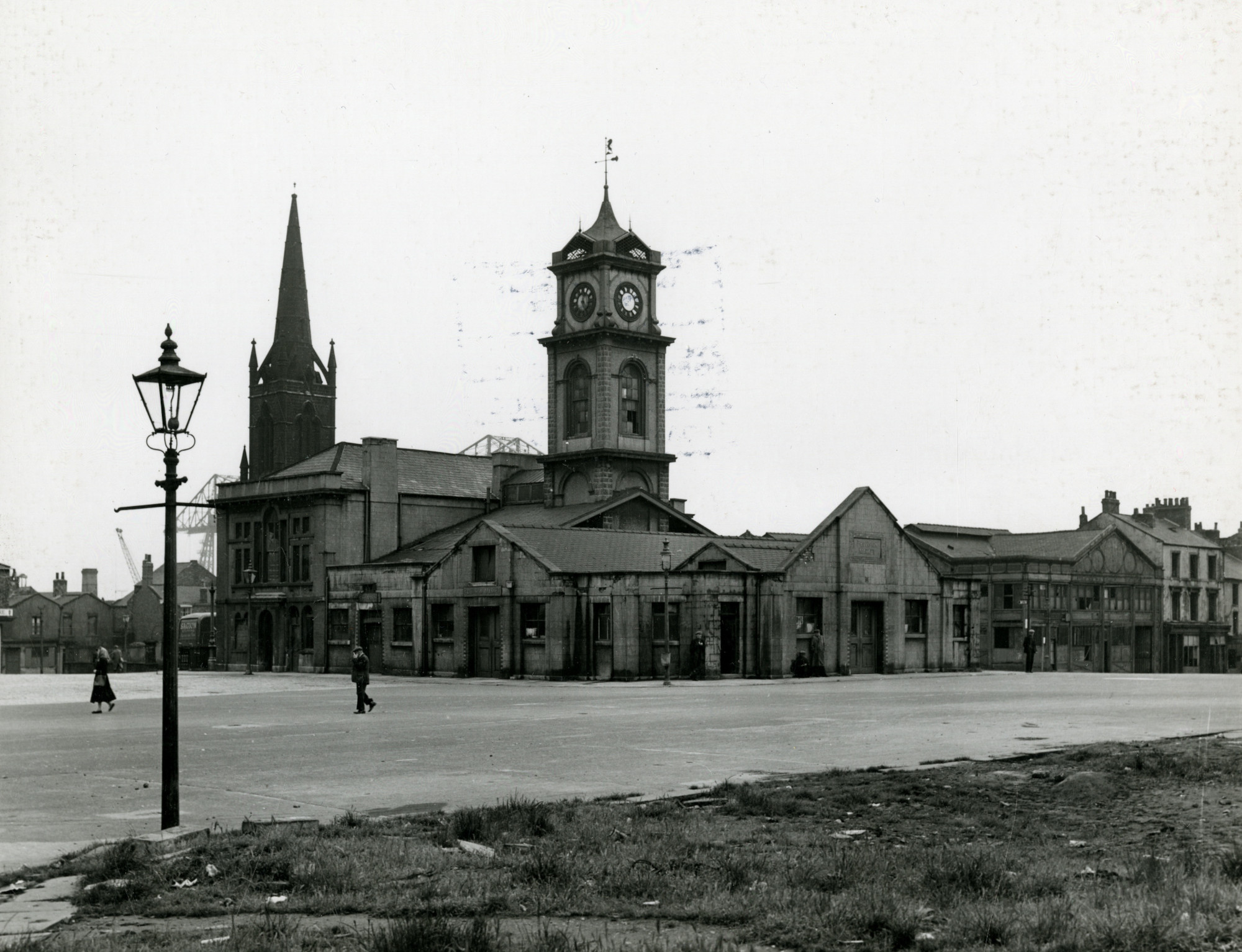
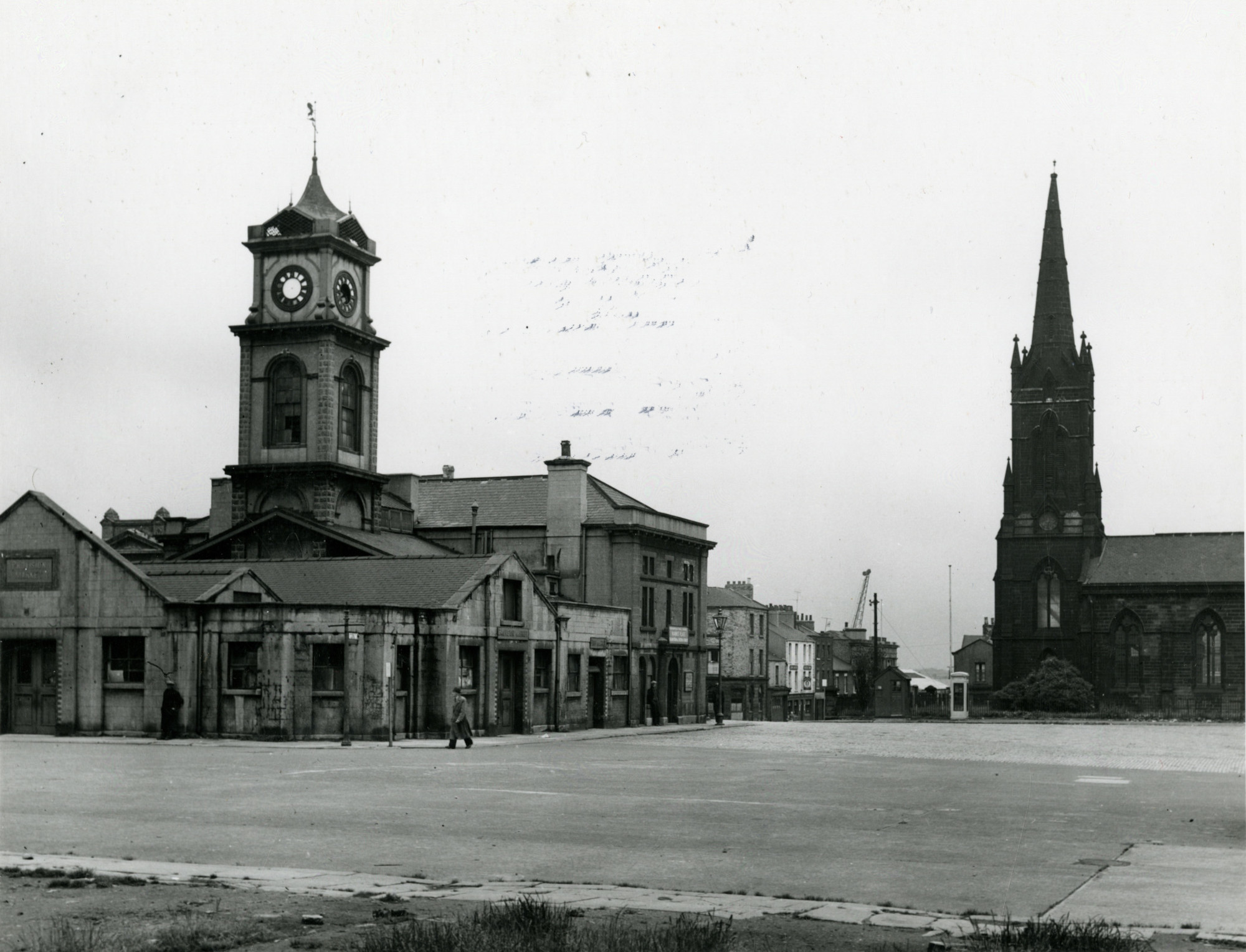
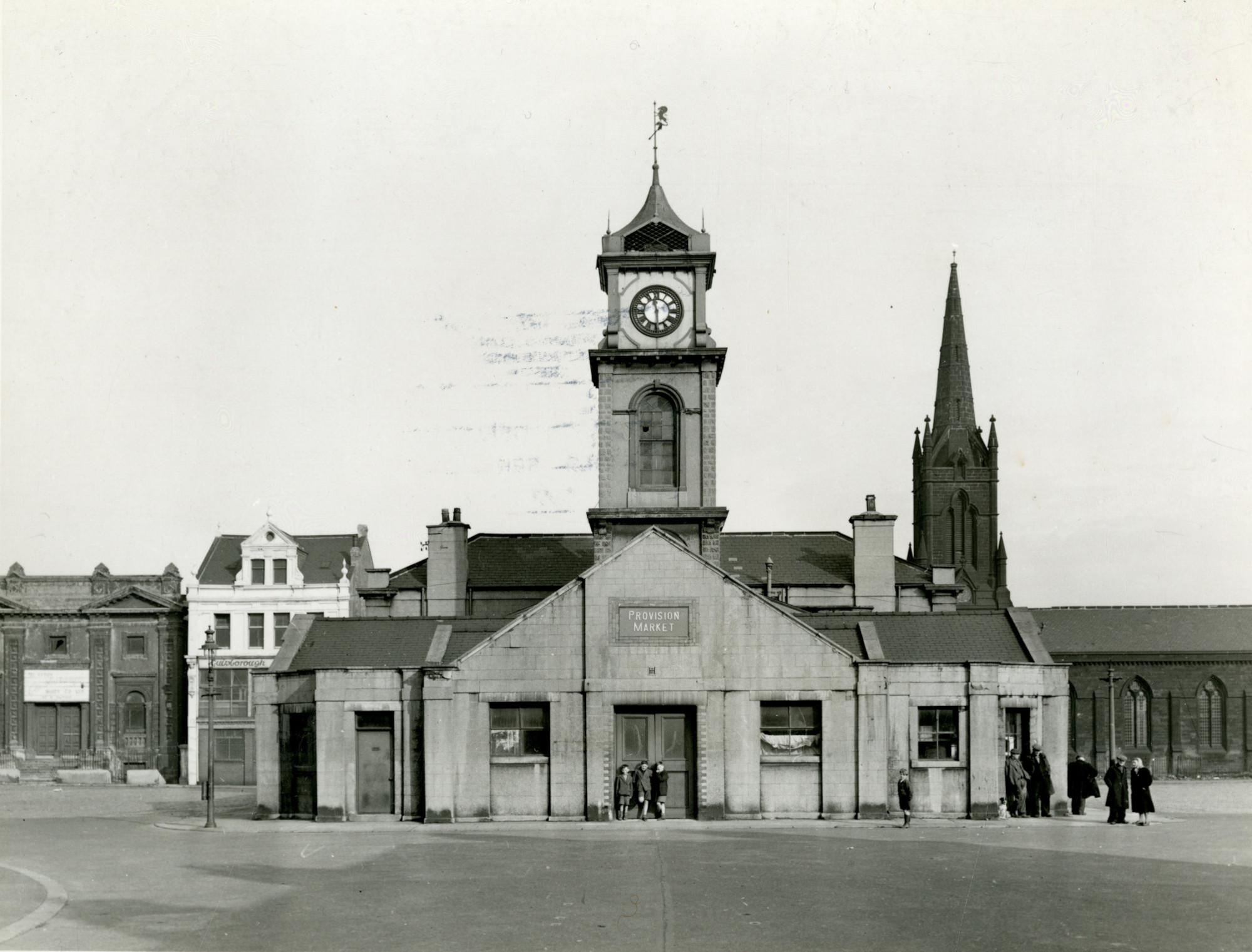
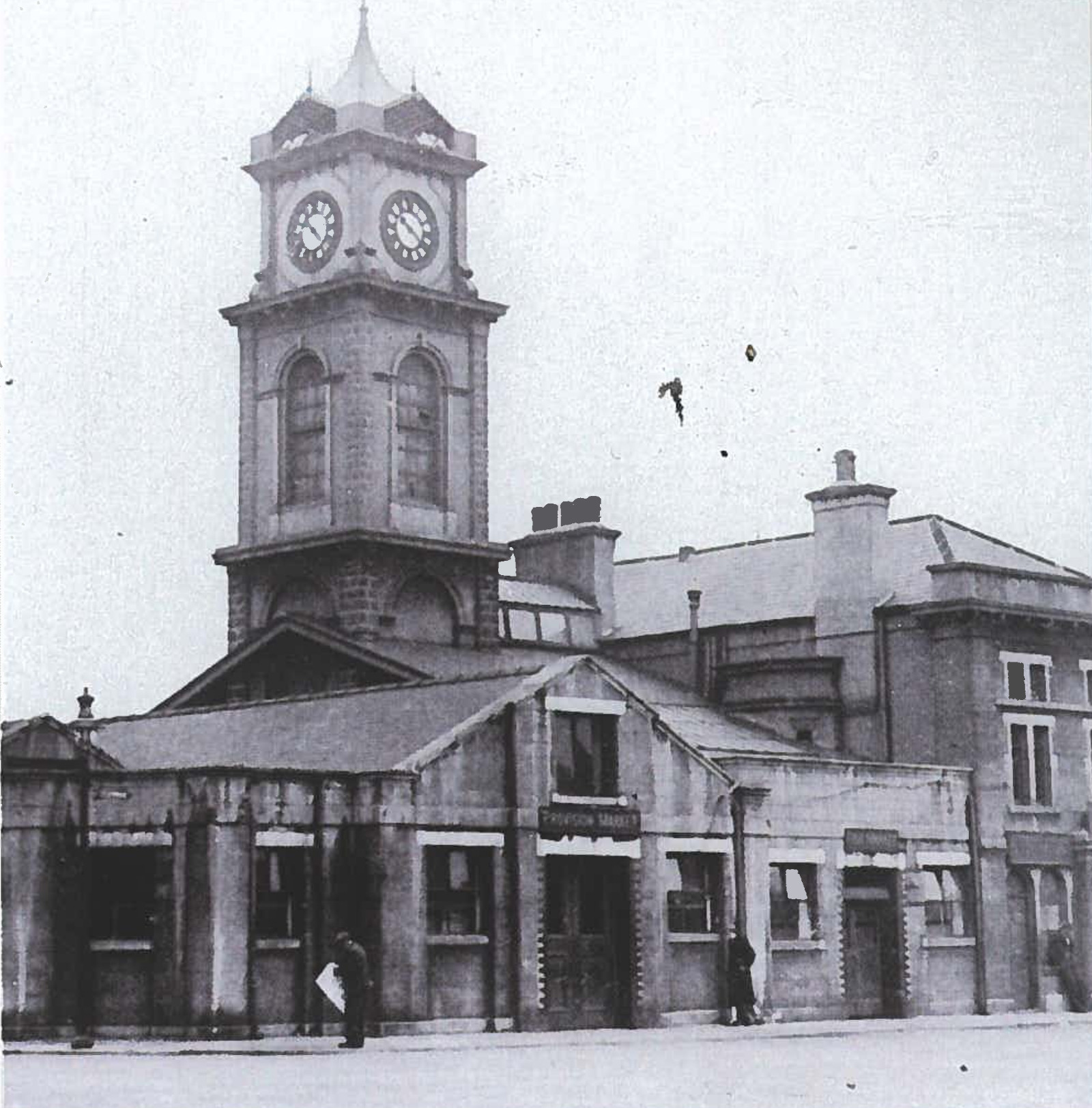
Photographs from the 1930s when the area of St. Hilda's started falling into decline
Source (all): Dorman Museum local archives
1950s
As the focus of activity in Middlesbrough relocated to the new town to the south of the railway line and station, the area known as St Hilda's or 'over the border' fell into rapid decline.
Extensive slum clearance started in the inter-war period with demolition of many of the buildings along Dacre Street and Nile Street.
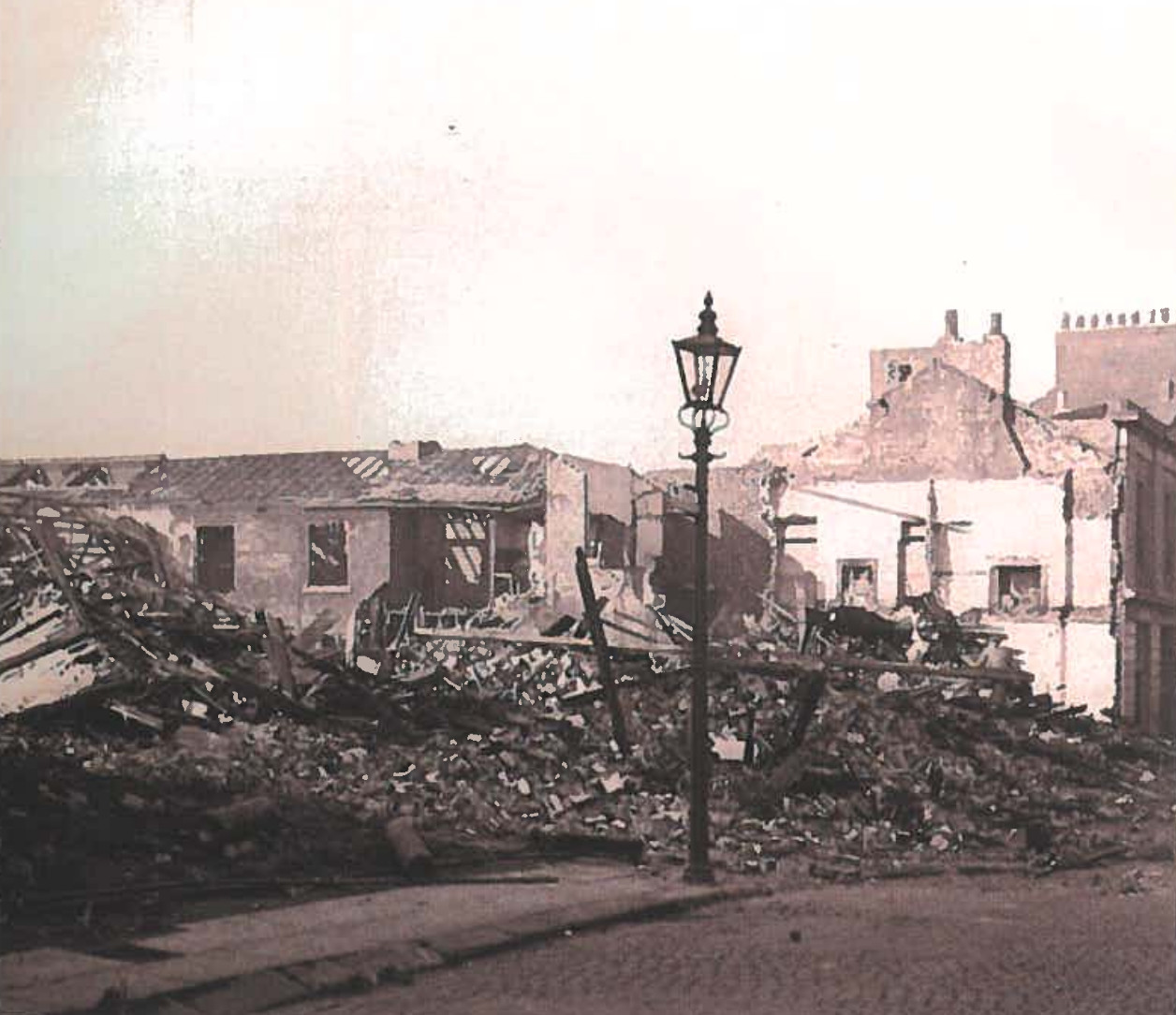
View from South Street to the Town Hall
Source: St Hilda's, Araf Chohan, 2015
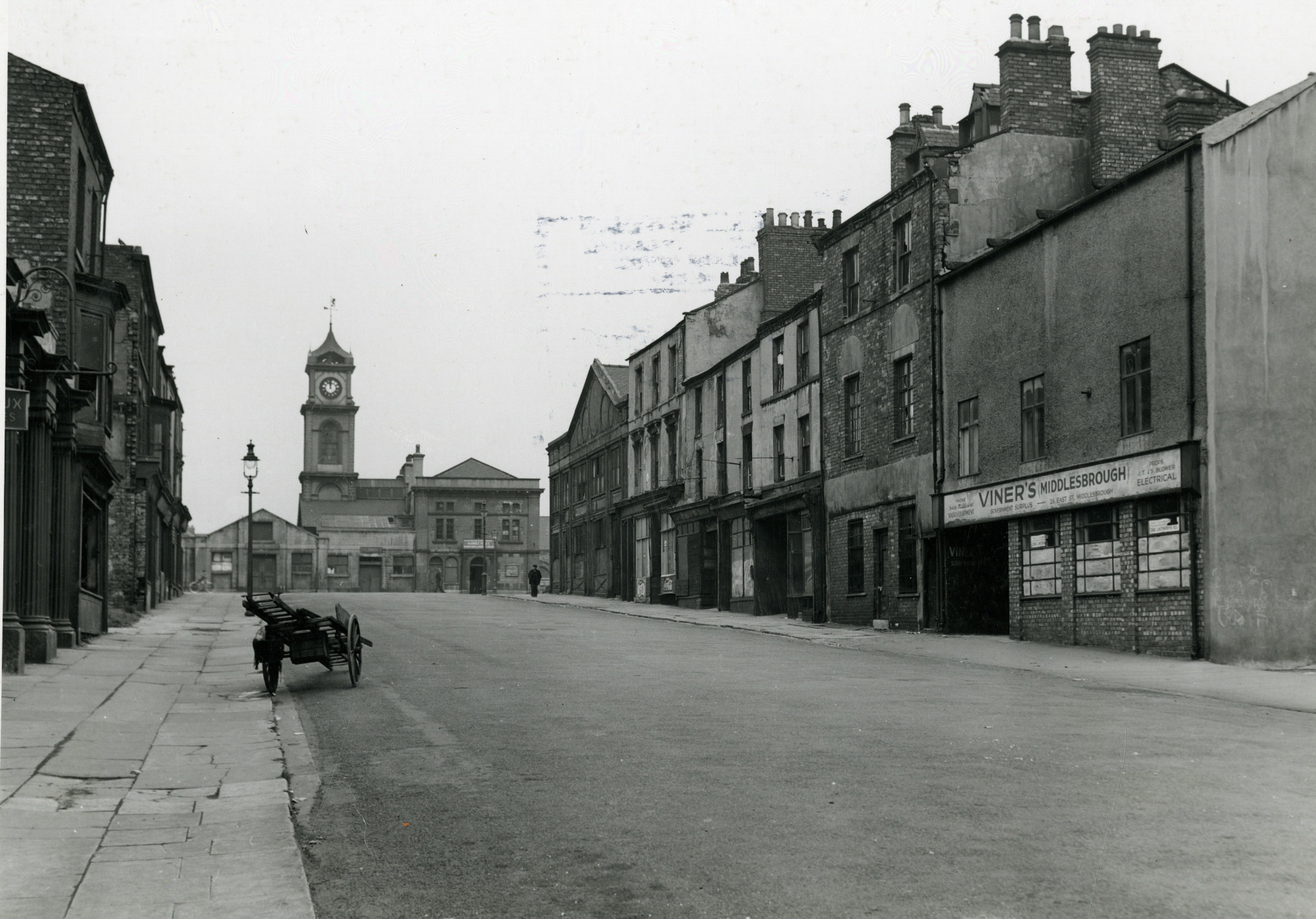
Photograph from the 1930s when the area of St Hilda's started falling into decline
Source: Dorman Museum local archives
1959
Artist L.S. Lowry was commissioned in 1959 by the Art Gallery to capture the spirit of St Hilda's in his unique industrial style. During this period Lowry created paintings of many of the industrial towns of the north, characterised by the 'matchstick men' that form an important role in the composition.
During this period, the area of St Hilda's was in a rapid decline with extensive demolition happening within the surrounding streets. St Hilda's Church was later demolished in 1969.
The painting was bought by the Friends of Middlesbrough Art Gallery and is exhibited at MIMA art gallery.
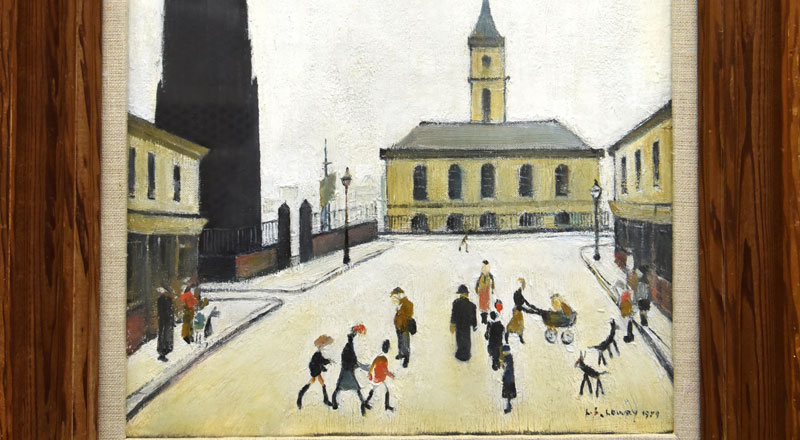
Middlesbrough Town Hall by L. S. Lowry
Source: Teesside University
1960s
In the early 1960s, the former provisions and fish market building was demolished to make way for the redevelopment of the site as part of the regeneration of the area.
Historic buildings were demolished throughout St. Hilda's, and new modernist two- and three-storey maisonettes were built.
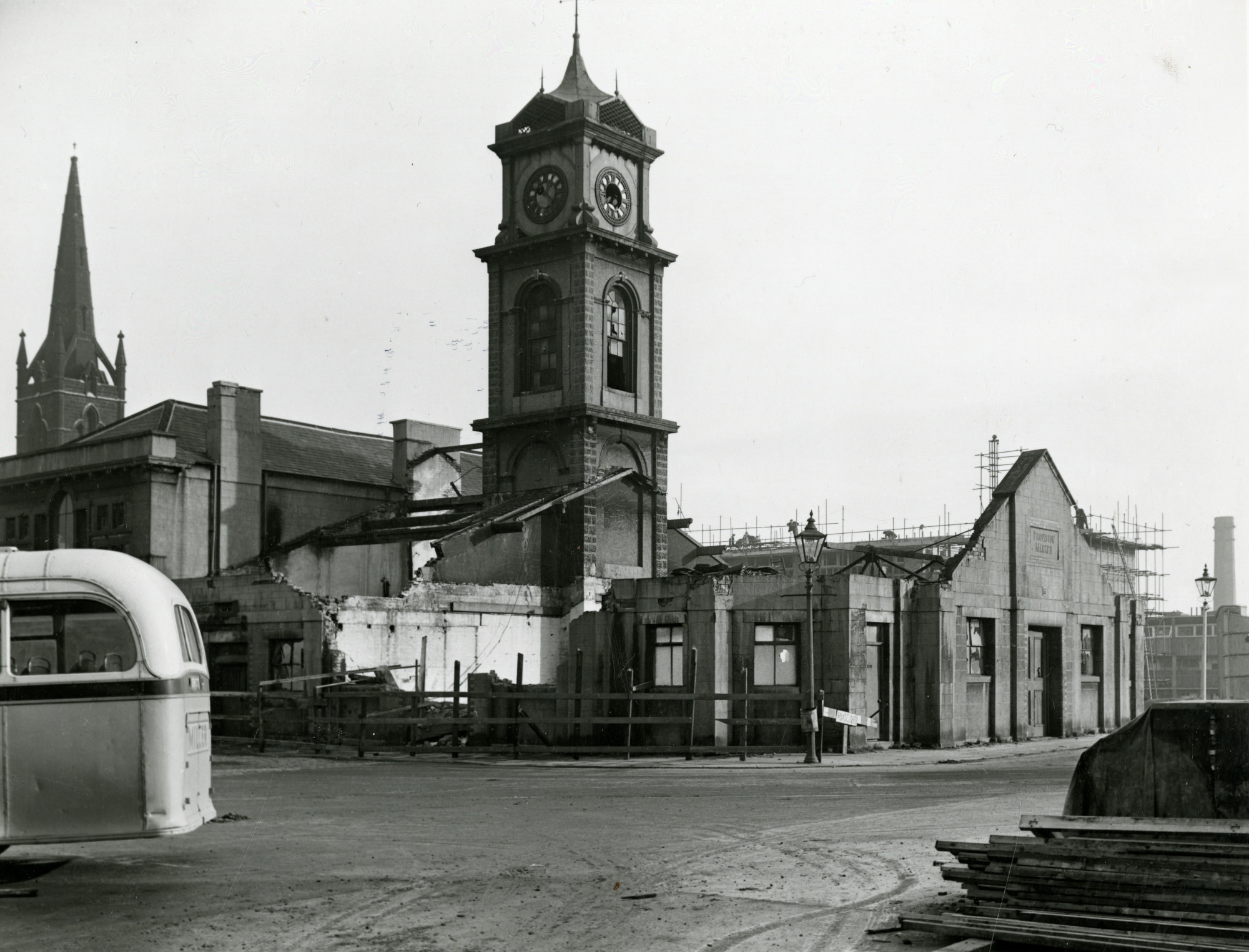
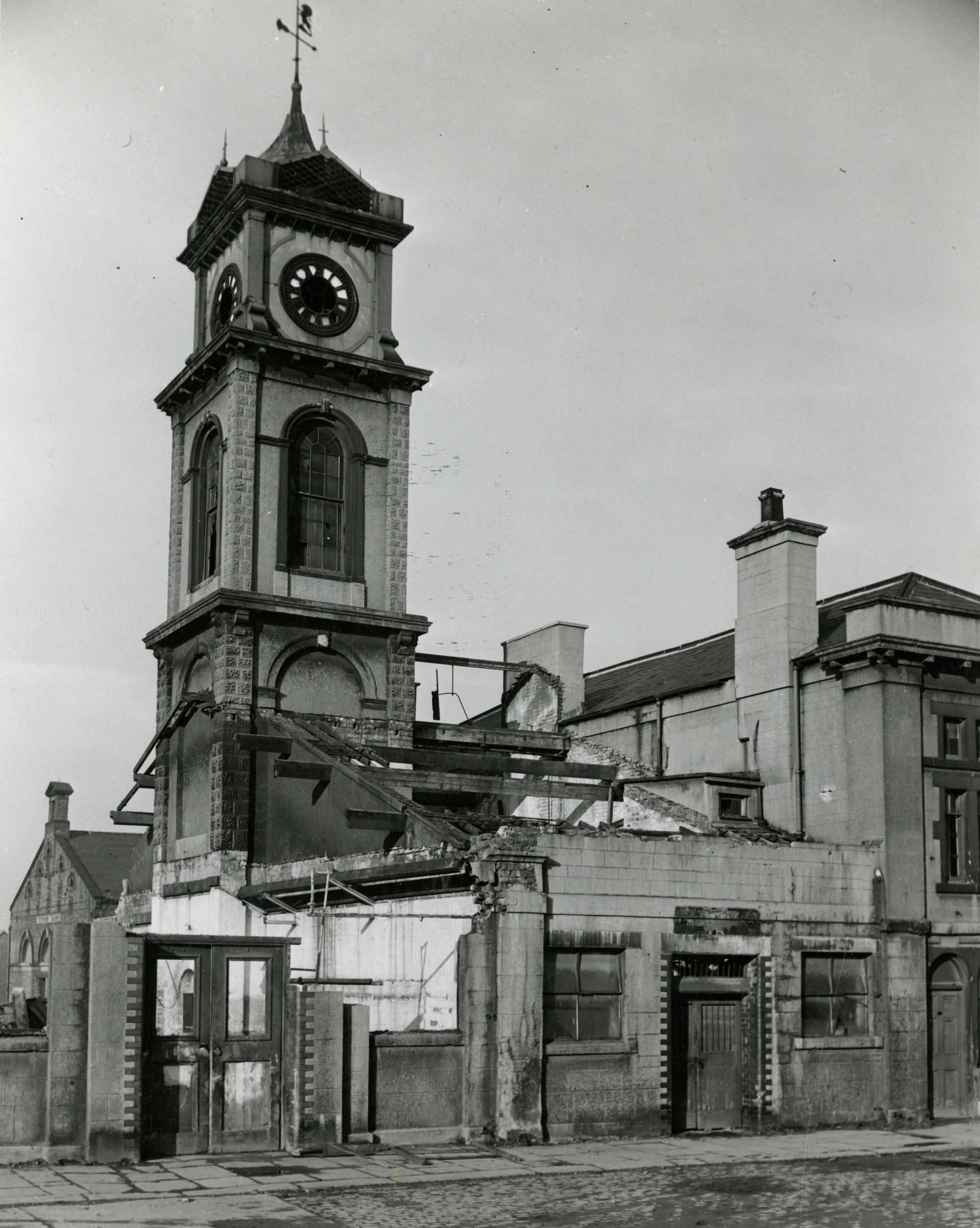
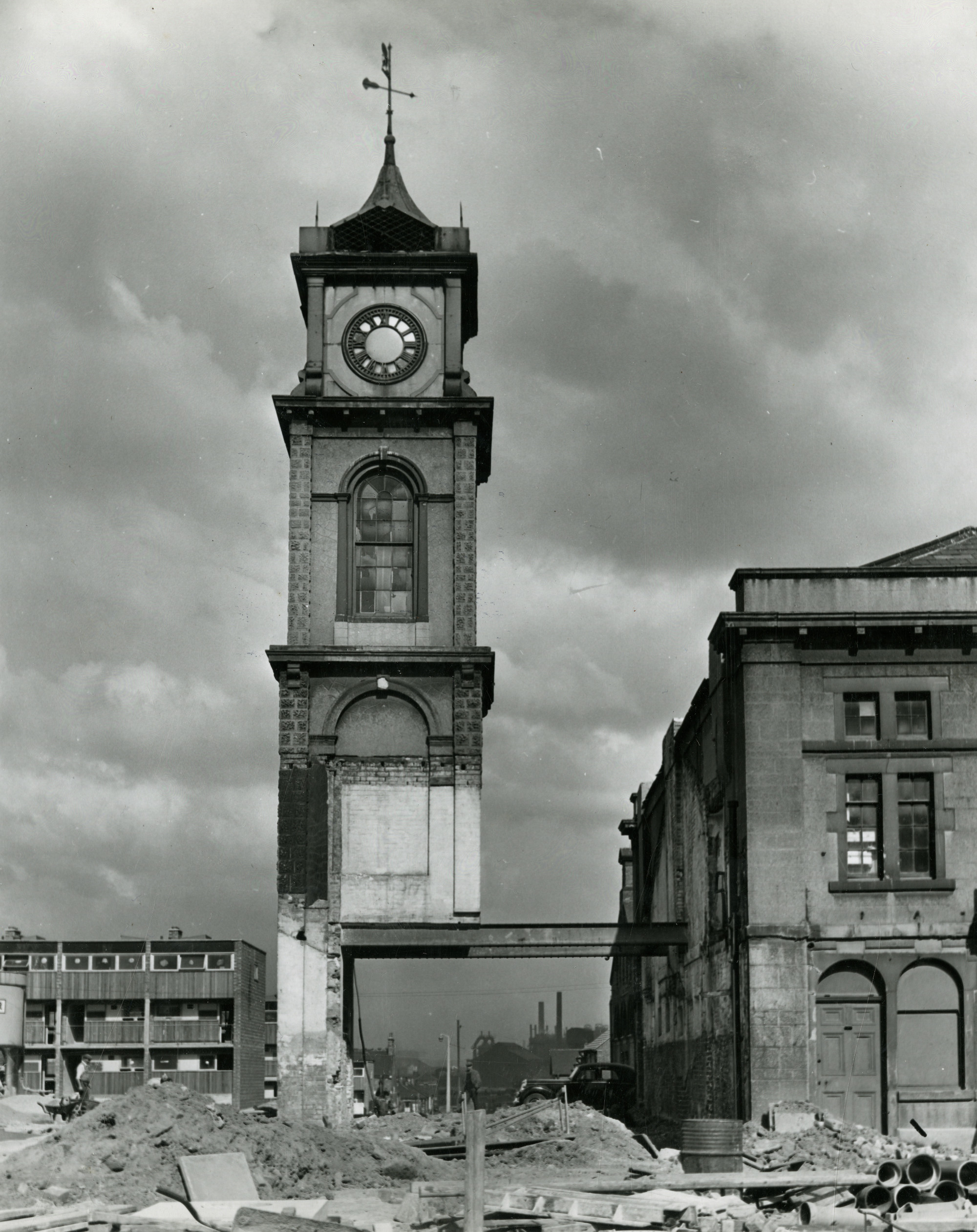
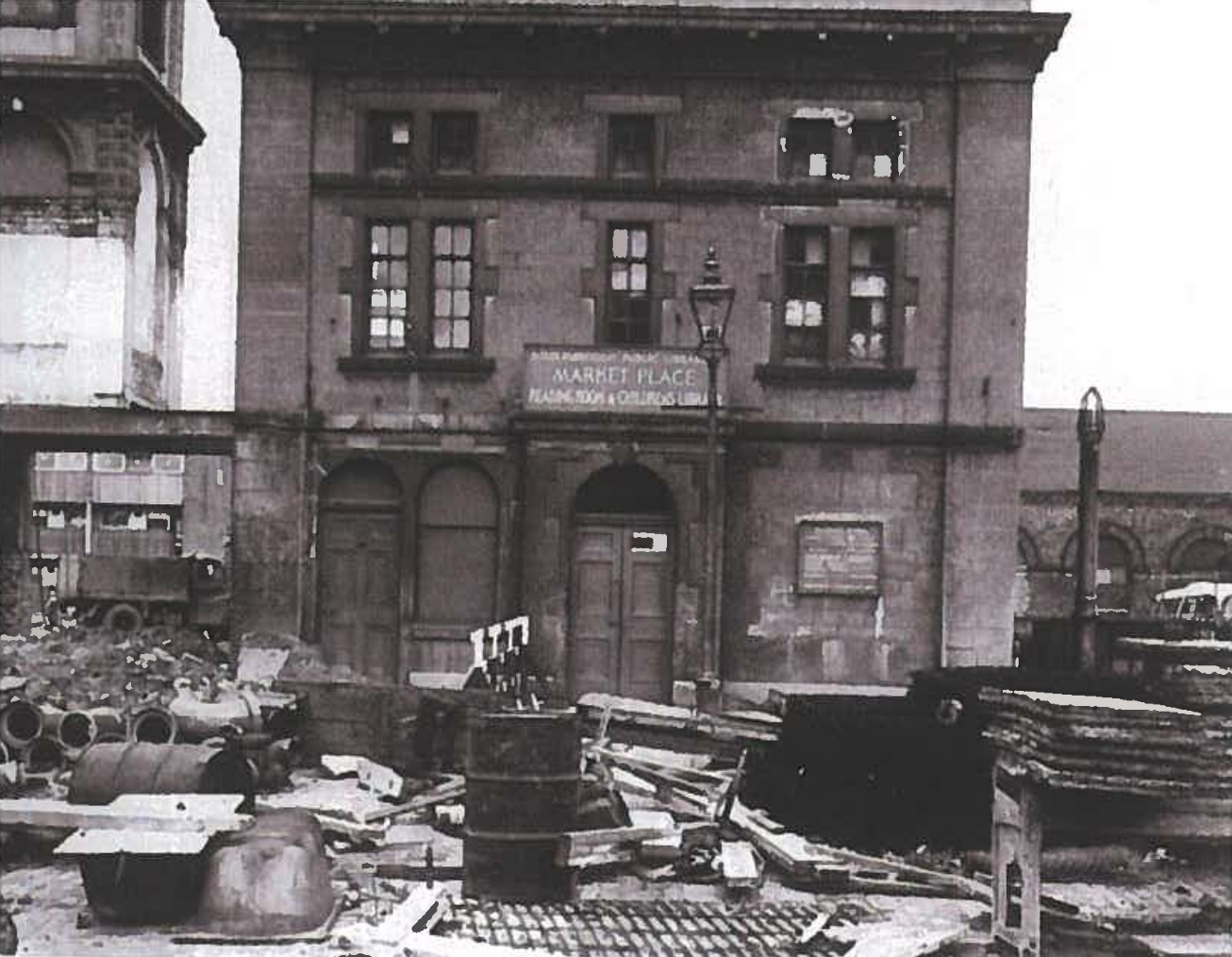
Photographs from the 1960s during the demolition of the provisions and fish market building
Source (all): Dorman Museum local archives
1970s
By the 1970s redevelopment of St Hilda's was well underway, with modernist three-storey terraces of houses and flats built to replace the old fashioned and low quality Victorian houses, shops, pubs, and hotels.
A new health clinic was built in place of the former Market Hall with the distinctive modern style with a flat roof, horizontal windows, and exposed materials internally and externally.
The Old Town Hall continued to be used as a public library and as a community and events venue for the St. Hilda's estate.

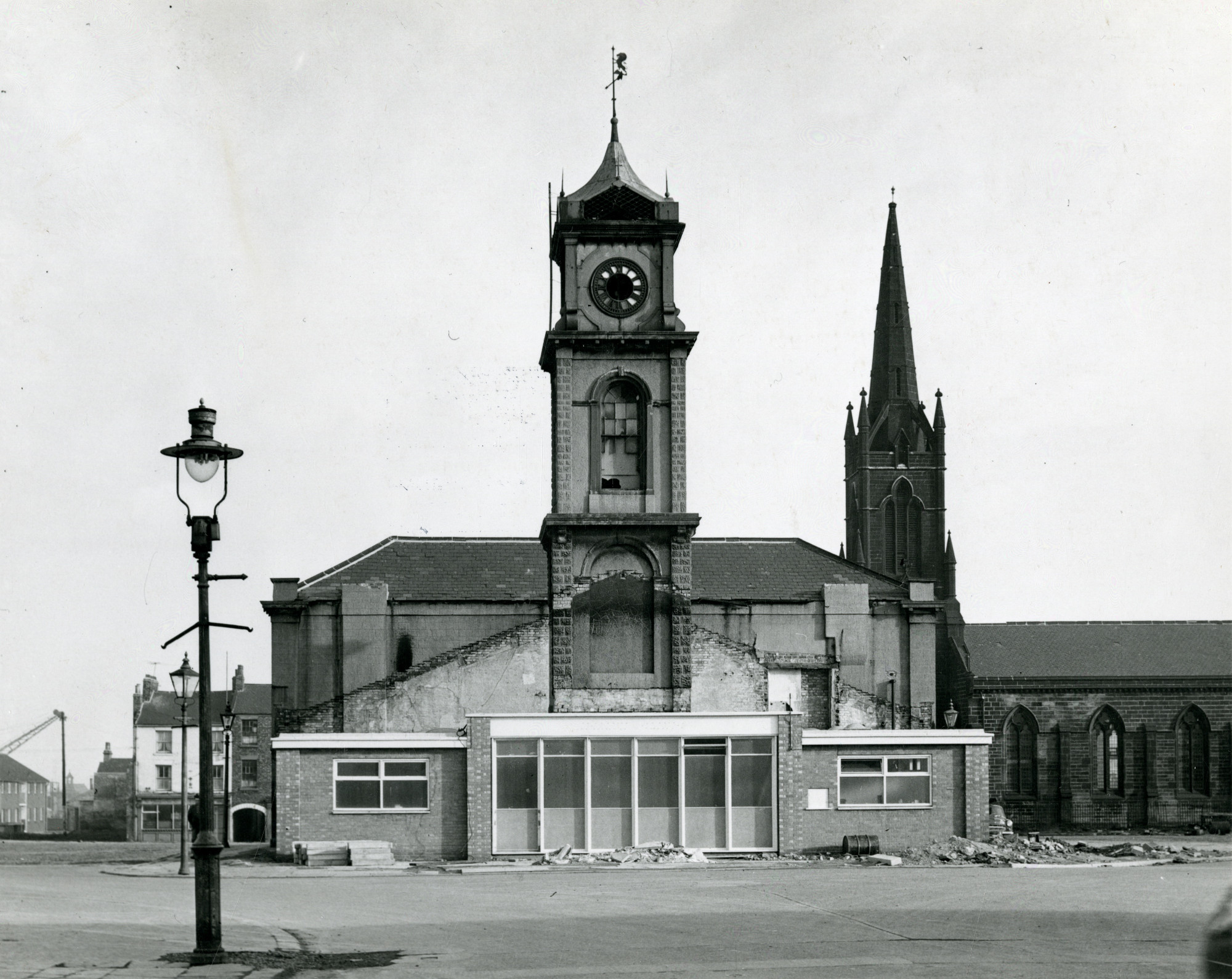
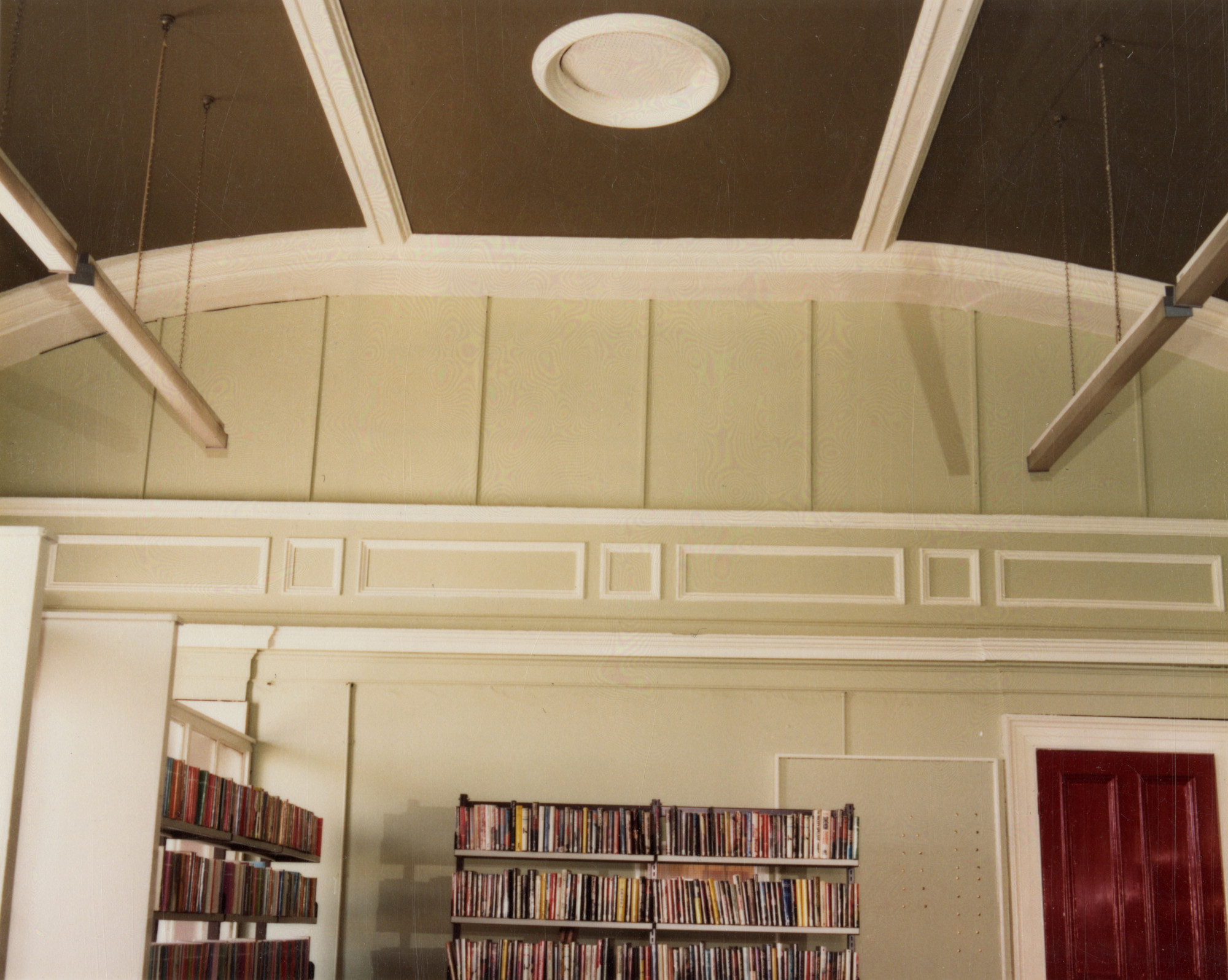
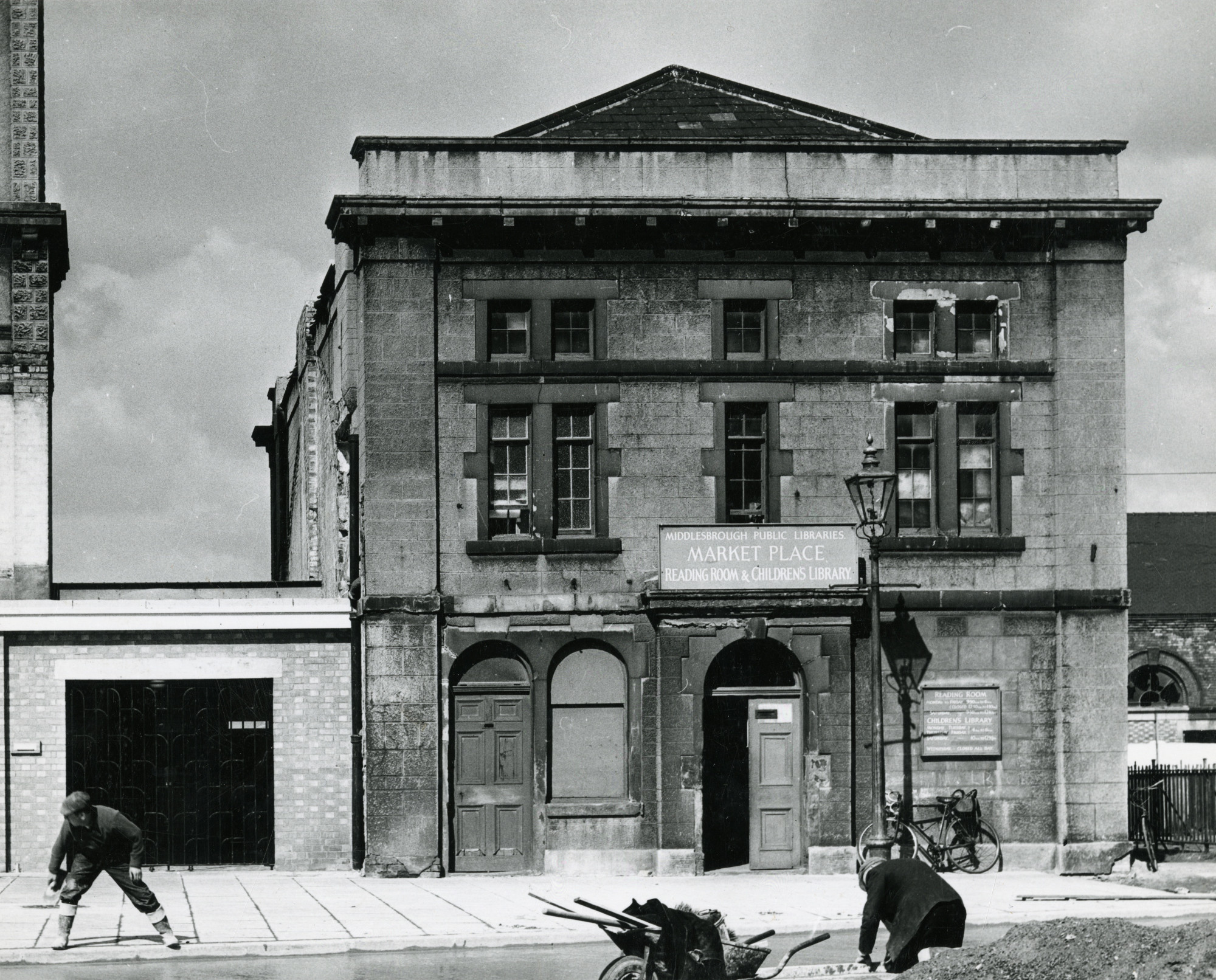
Photographs from the 1970s following the construction of the Health Clinic in place of the Market Hall
Source (all): Dorman Museum local archives
1998
In 1998 Middlesbrough's Old Town Hall was listed Grade II by Historic England. This listing would protect the building against any works, including demolition, without prior permission.
This protection was essential to ensure that this landmark building that formed such an important role in the story of the old town of Middlesbrough would be protected for the future.
Photographs taken in the late 1900s show the change in the character of the area caused by mass demolition and redevelopment.
During this period a pitched roof was added to the health clinic which gave it greater prominence from the surrounding streets.

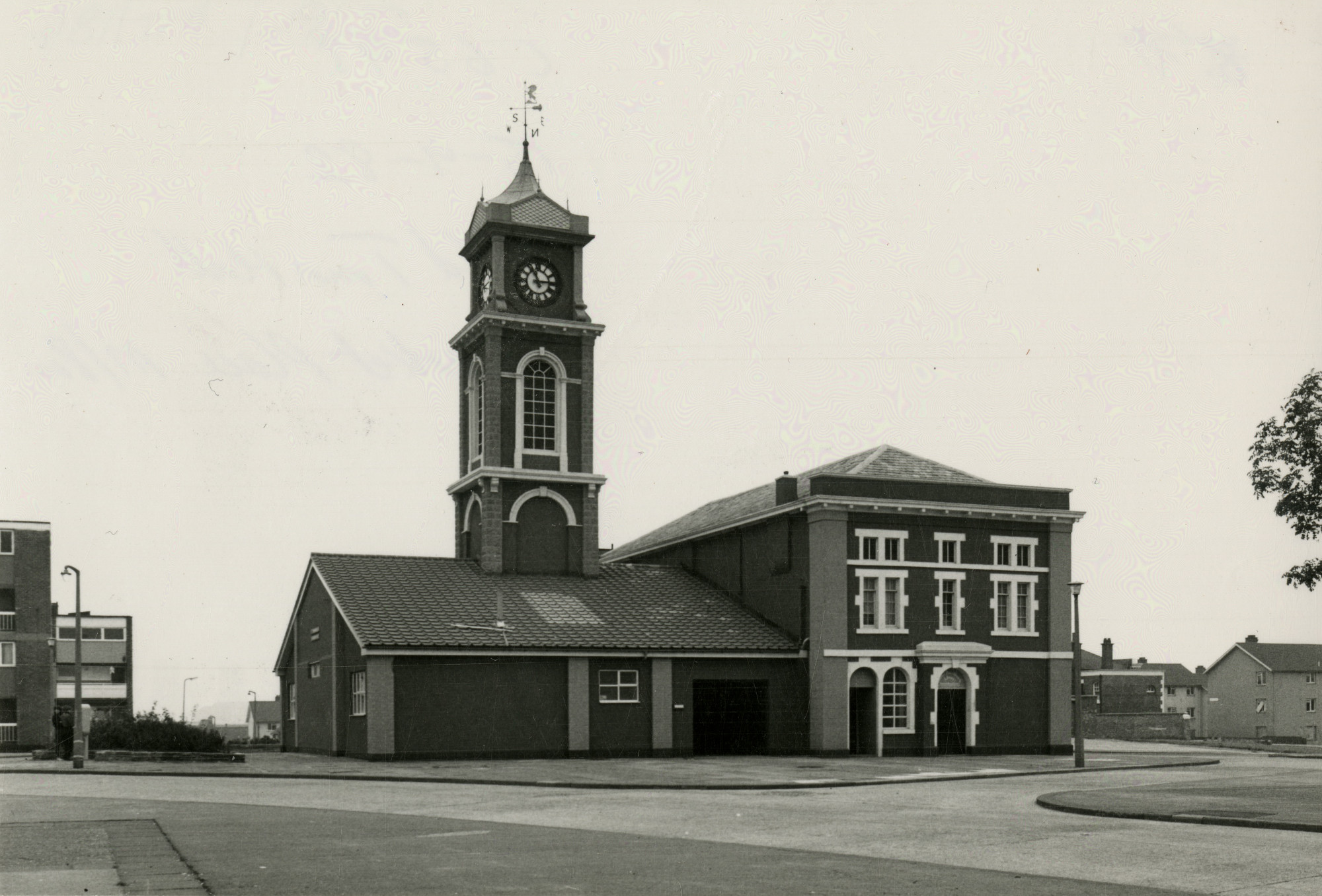
Photograph from the 1980s showing the new pitched roof to the health clinic
Source: Dorman Museum local archives
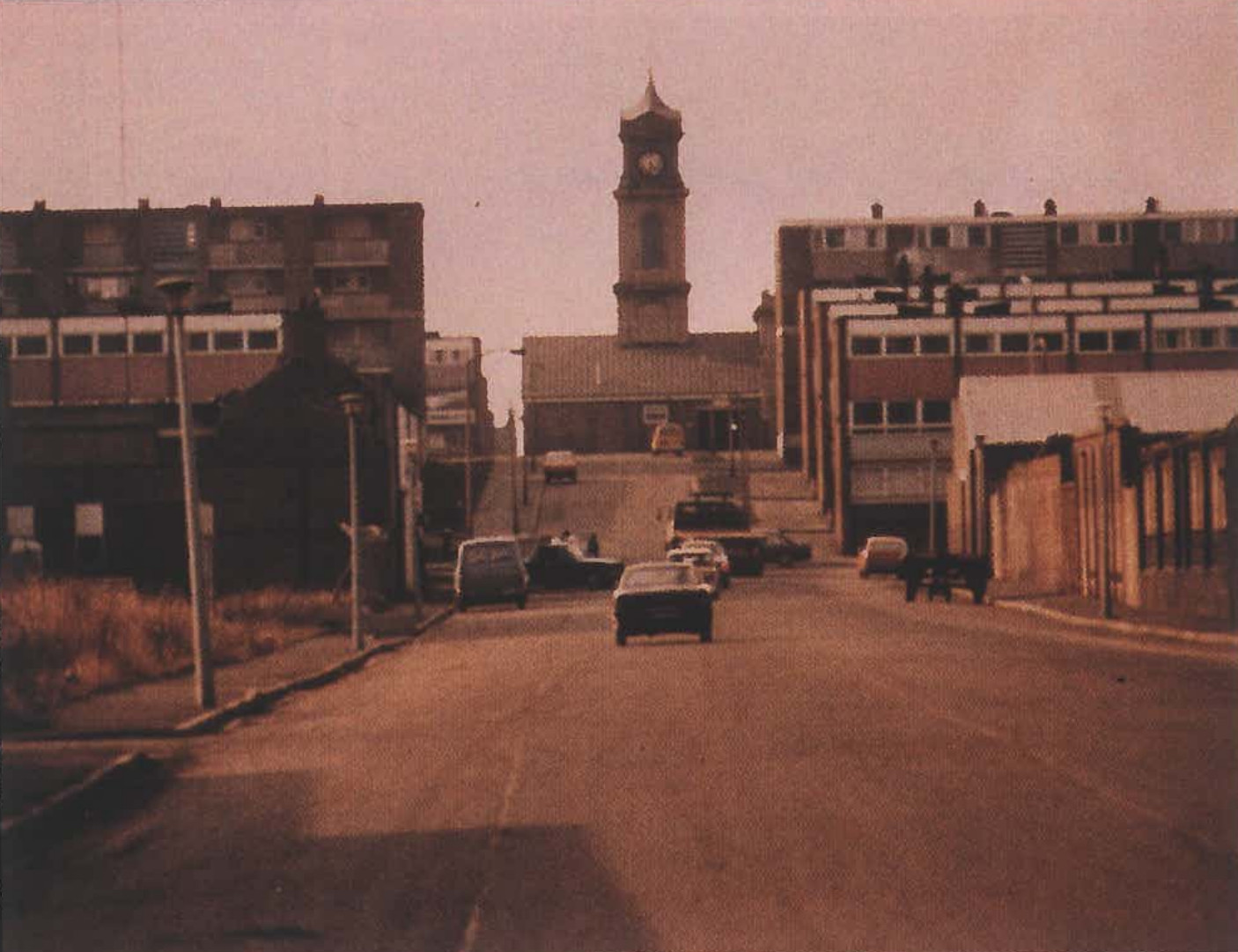
View from the 1980s from East Street towards the Town Hall
Source: St Hilda's, Araf Chohan, 2015
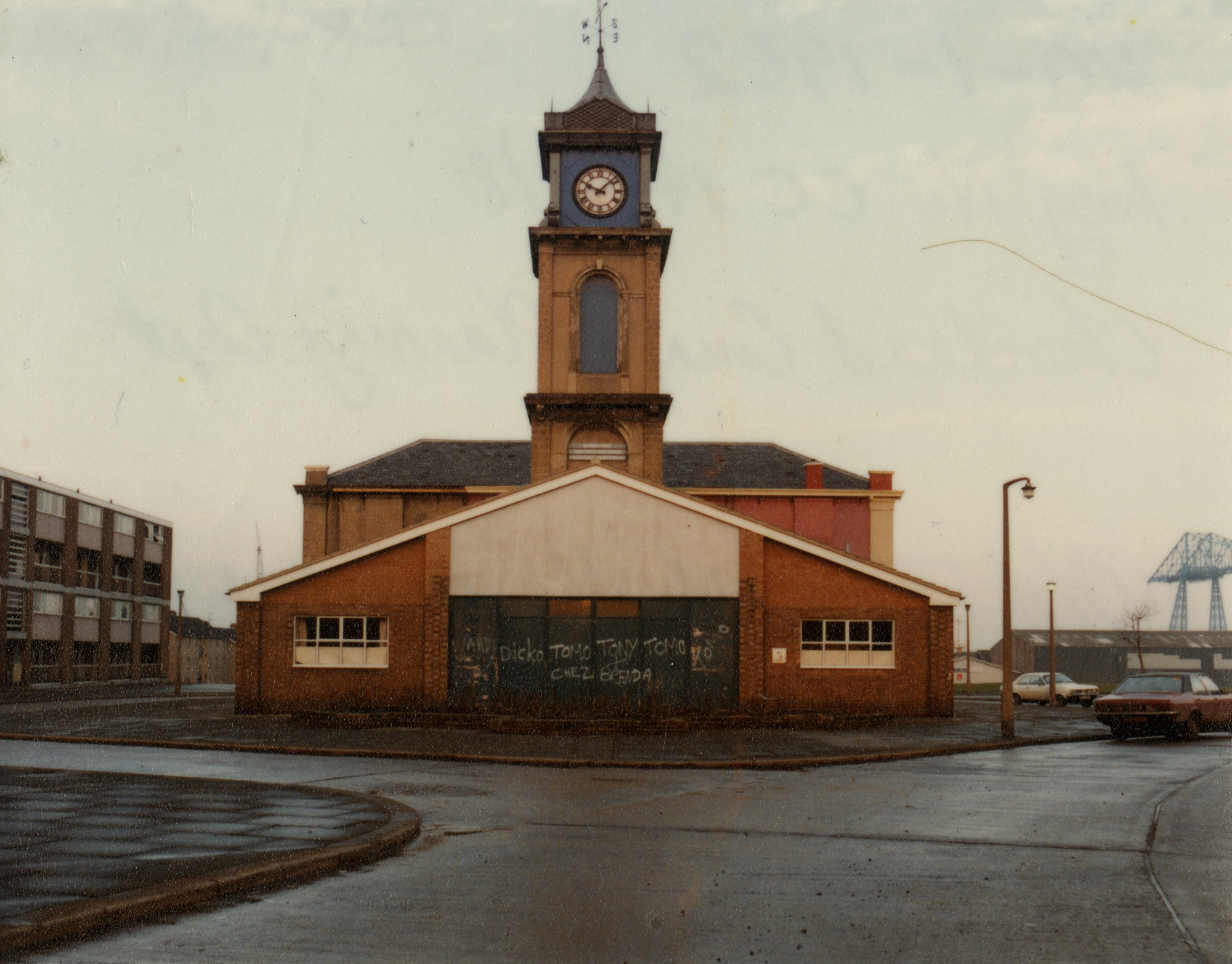
Photograph from the 1980s showing the new pitched roof to the health clinic
Source: Dorman Museum local archives
2000s
Within 40 years of construction of the new modernist maisonette terraced housing, they were later demolished in the early 21st Century.
By the early 2000s the Old Town Hall was left sat within the context of an extensive natural green space. The Historic England Listing ensured that the building was protected from demolition.
Since this time the building has been retained as an unused local landmark.
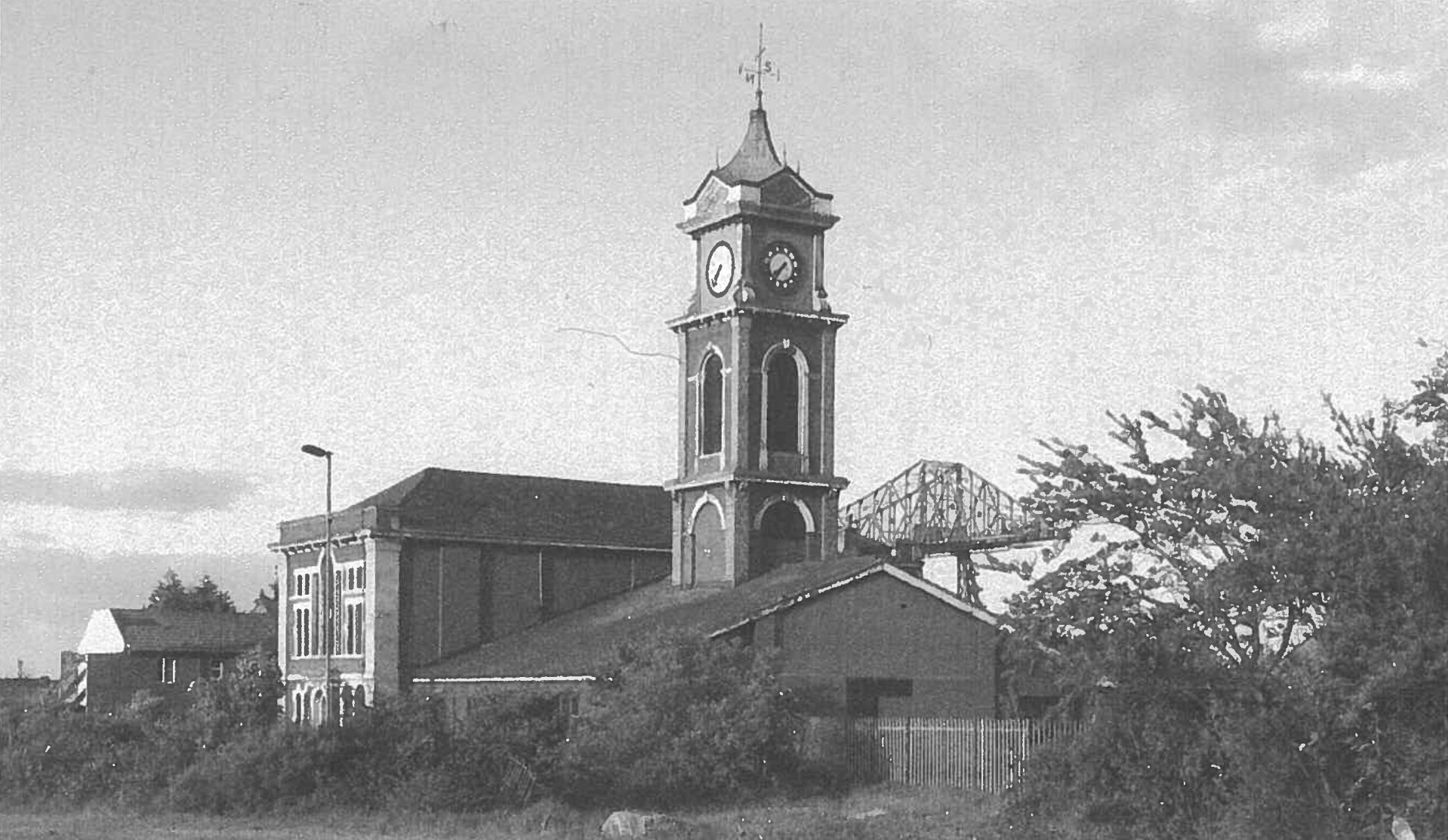
View from the 2000s from South Street towards the Town Hall
Source: Middlesbrough Past and Present, Paul Menzies, 2011
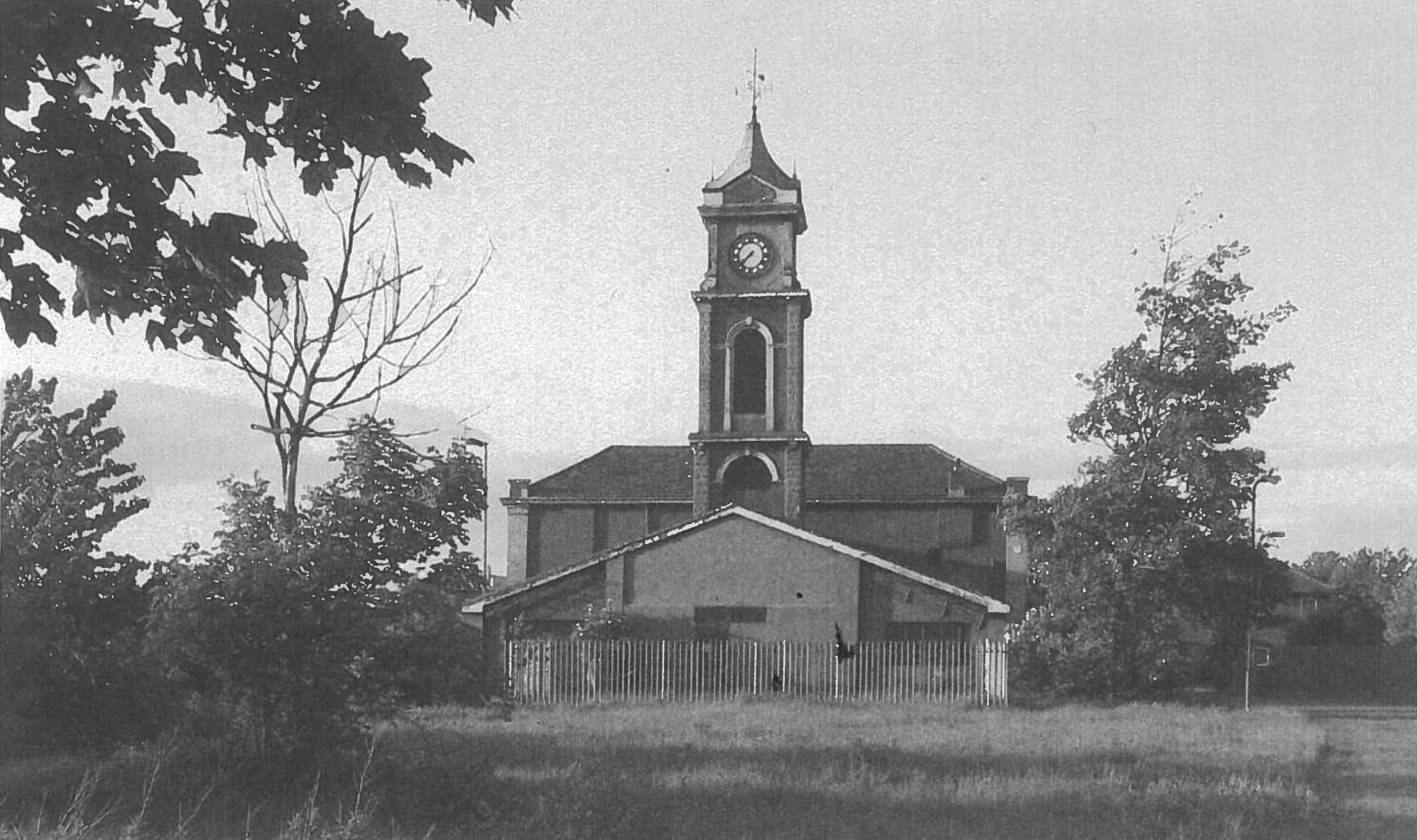
View from the 2000s from South Street towards the Town Hall
Source: Middlesbrough Past and Present, Paul Menzies, 2011
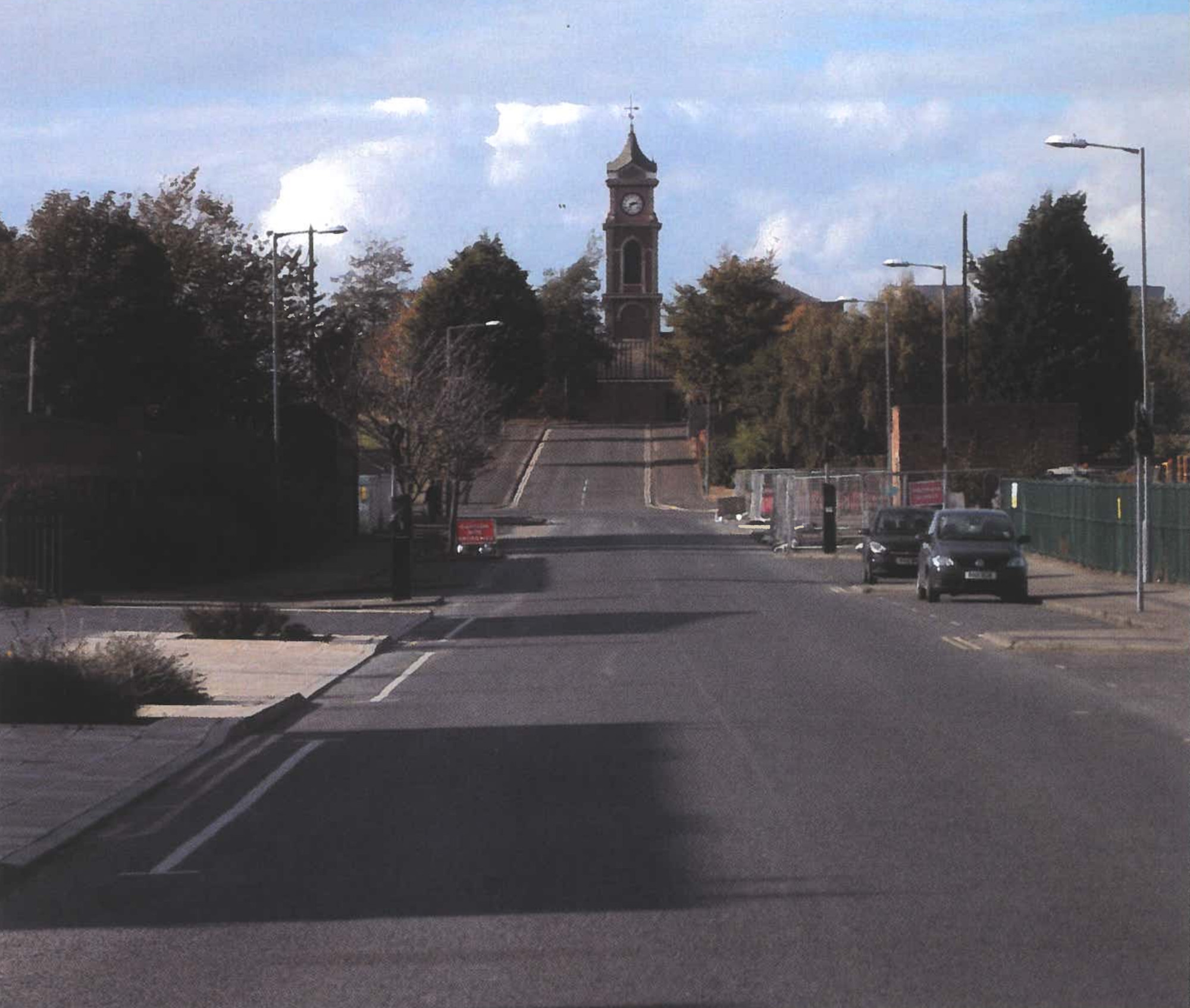
View from the 2000s from East Street towards the Town Hall
Source: St Hilda's, Araf Chohan, 2015
2008
In the early 2000s the growth of the technology industry in Middlesbrough was recognised and extensive investment took place in the growing digital sector in Middlesbrough. This investment was intended to retain local talent in the area, providing flexible and affordable high quality workspace.
This investment led to the development of Boho, providing workspace that allowed local technology companies to upscale within the area, preventing loss of talent to cities such as Leeds and Newcastle.
The Boho development zone was located towards the southern area of St Hilda's adjacent to the train station, providing sustainable transport links.
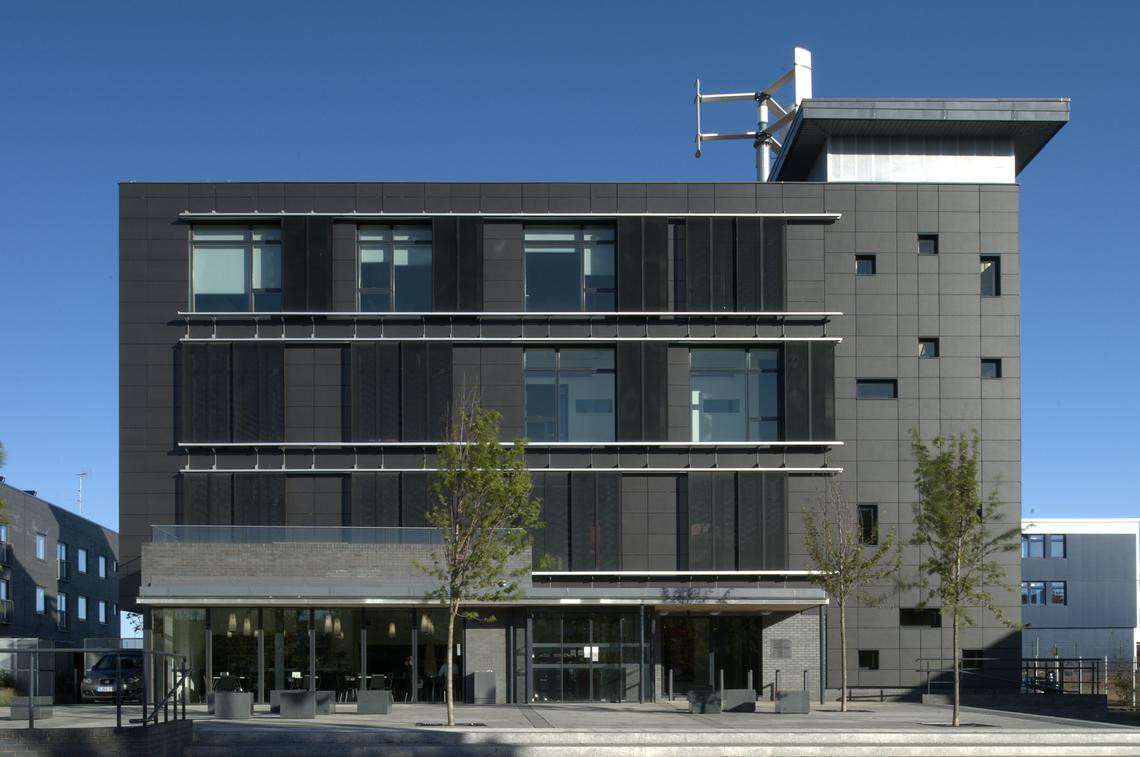
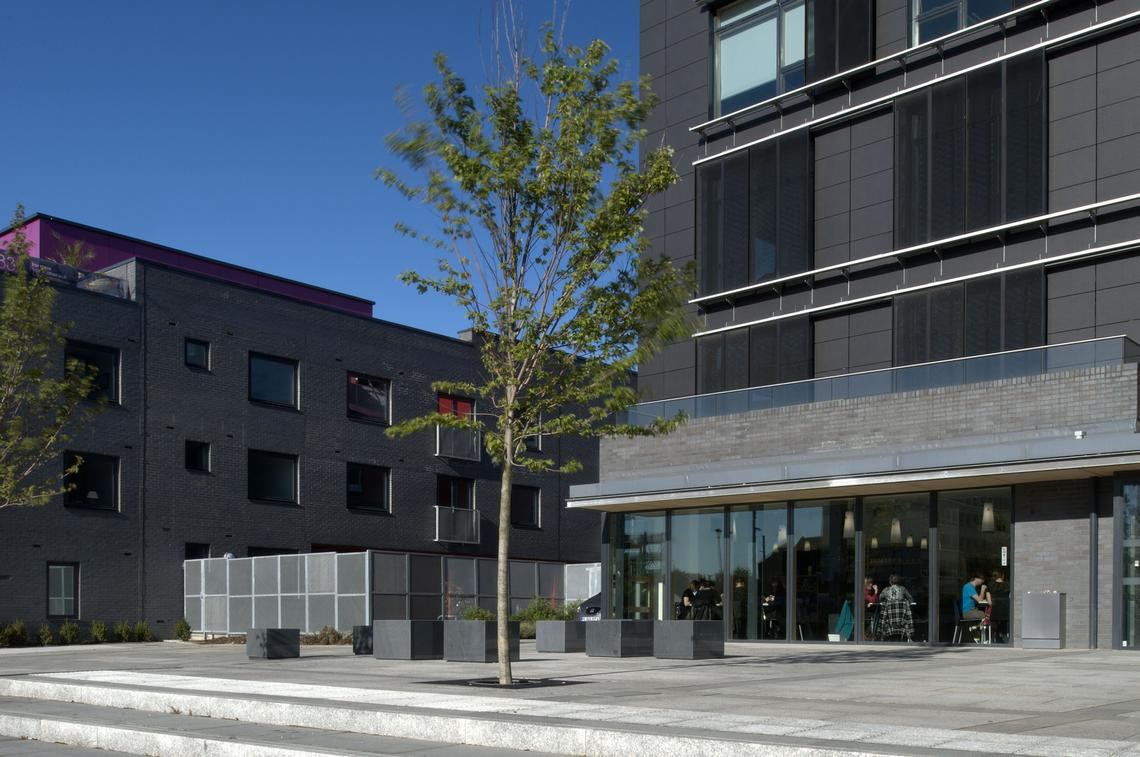
Boho One, designed by xsite architecture
Source: xsite architecture
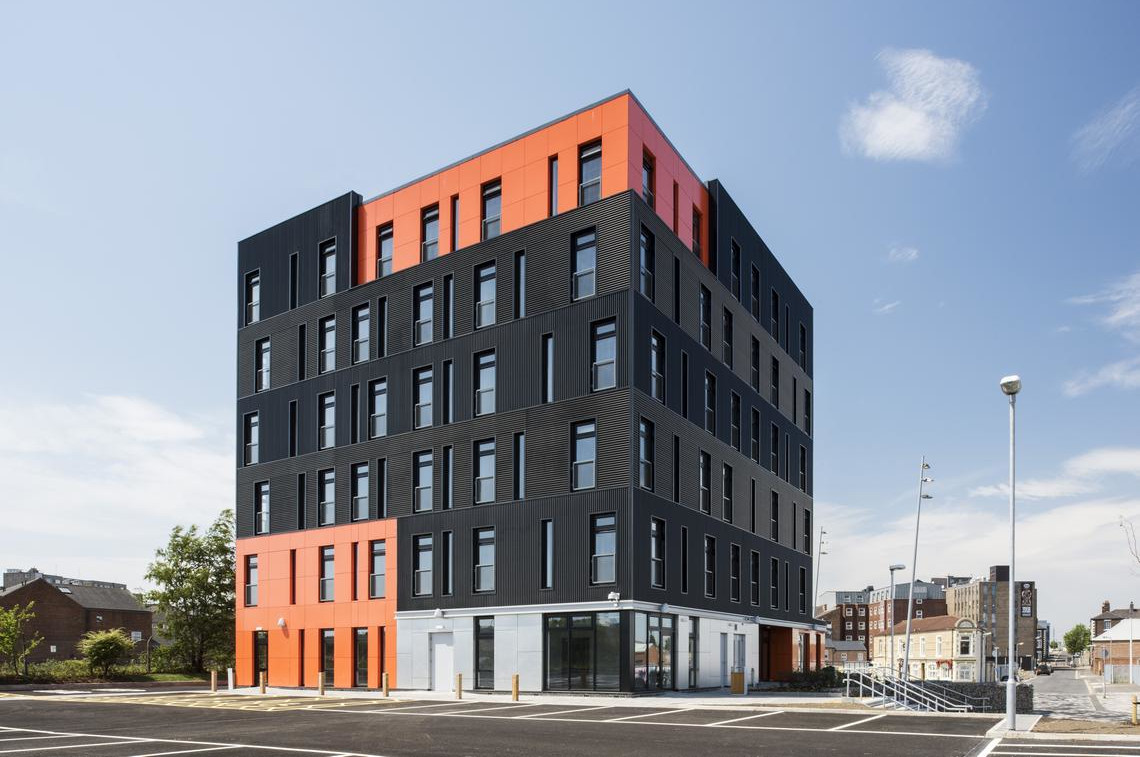
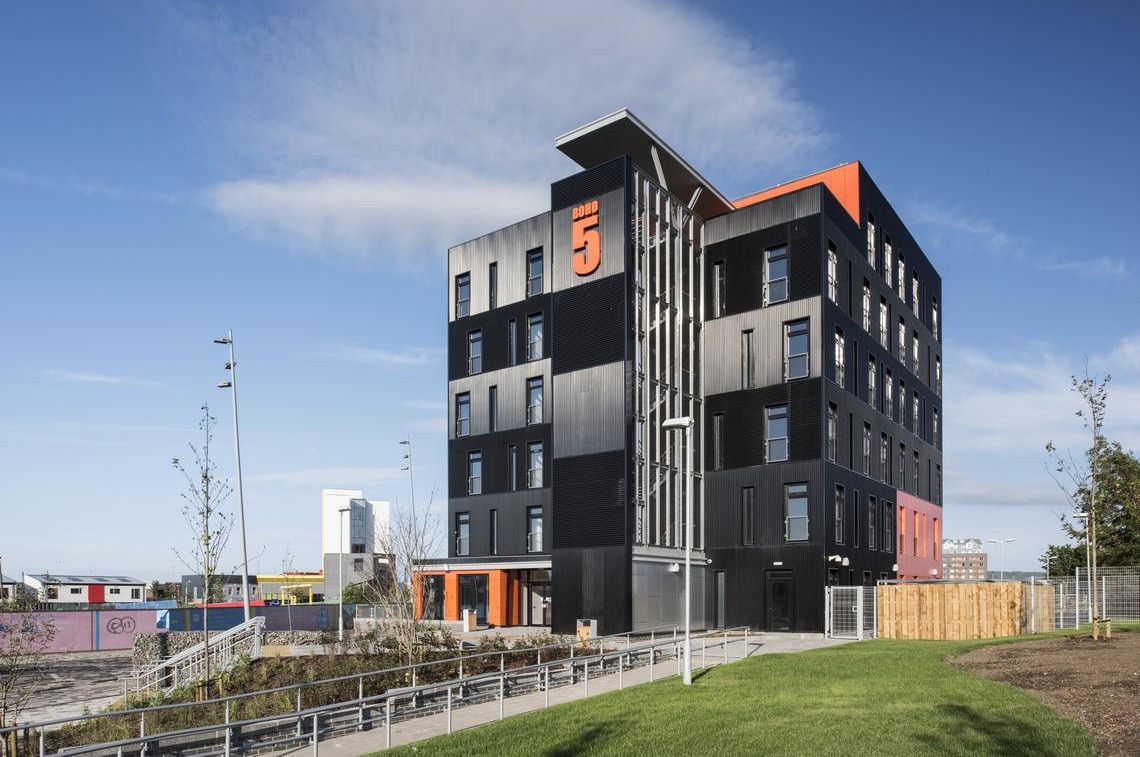
Boho Five, designed by xsite architecture
Source: xsite architecture
2018
The Old Town Hall was added to the SAVE Buildings at Risk Register. In SAVE's report they stated:
'The small scale of this building itself tells a powerful story of the development of Middlesbrough's fortune at this time. The Old Town Hall has a very special place in the history of the town, it features in a painting by Lowry and was reputedly the venue where Gladstone declared that Middlesbrough was 'an infant Hercules'.'

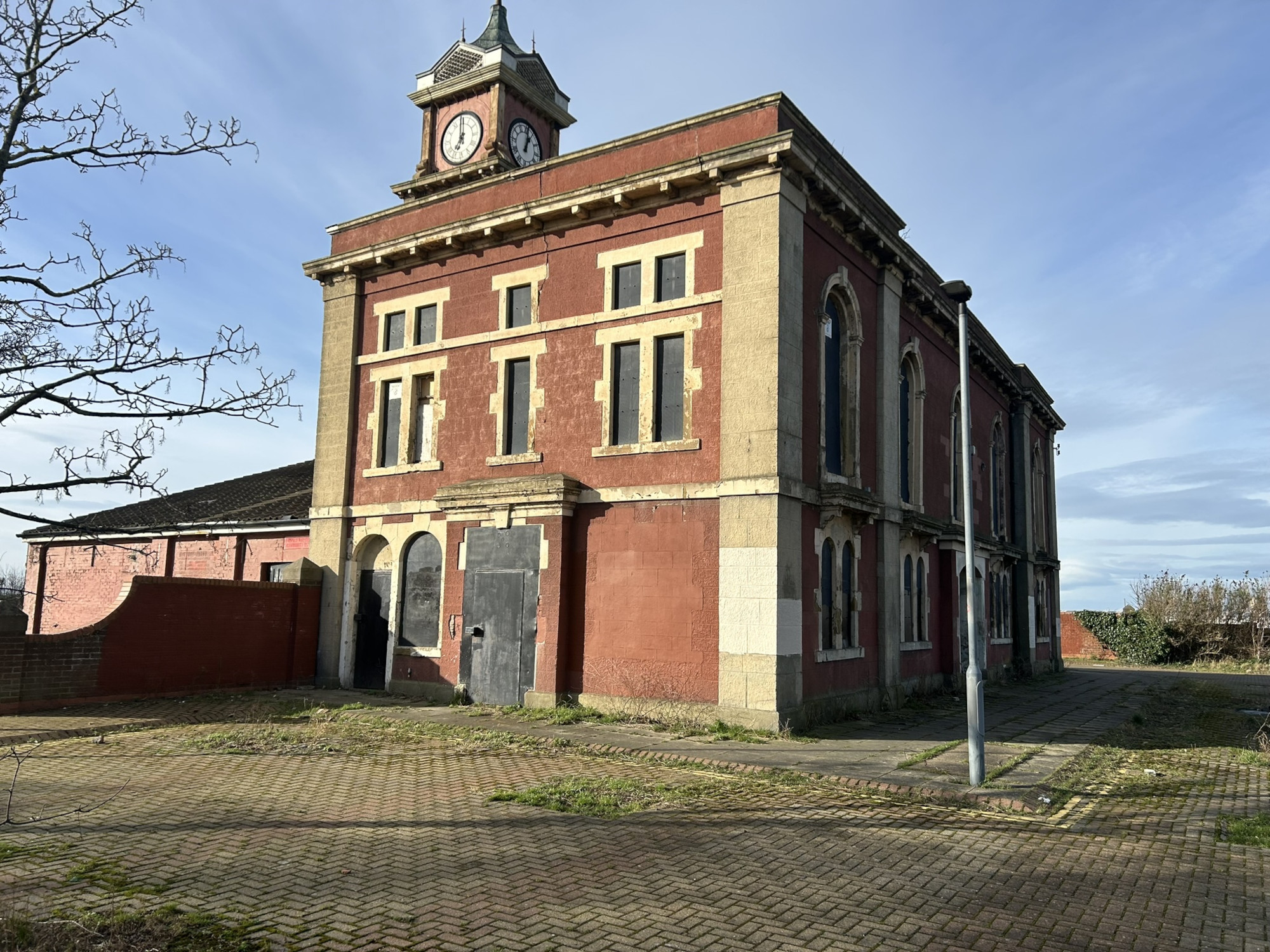
Existing photograph of Middlesbrough's Old Town Hall
Source: Seven Architecture Ltd.
2023
In 2022 Middlesbrough Council submitted an application for National Heritage Lottery Funding to bring the building back into use.
The National Lottery Heritage Fund application was subsequently approved to fund the project up to Planning and Listed Building Consent submission.
As part of the Development Stage of the project, the team have prepared a variety of resources to increase awareness of the importance of the Old Town Hall in the history of Middlesbrough.
These resources will continue to be developed during the delivery stage of the project.

2024
Middlesbrough Council will submit an application for Delivery Stage Funding to the National Lottery funding to support the building's restoration and reuse.
